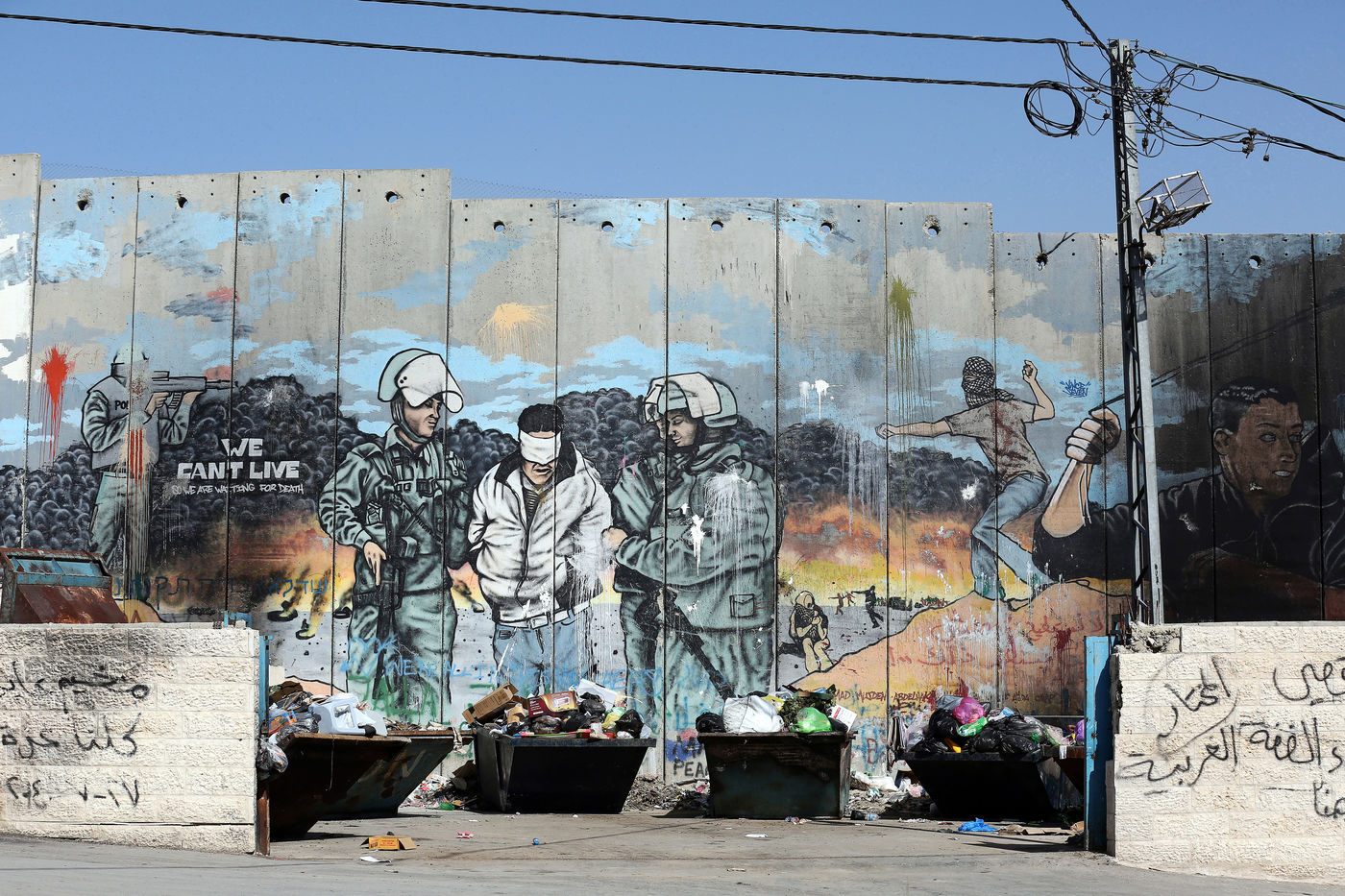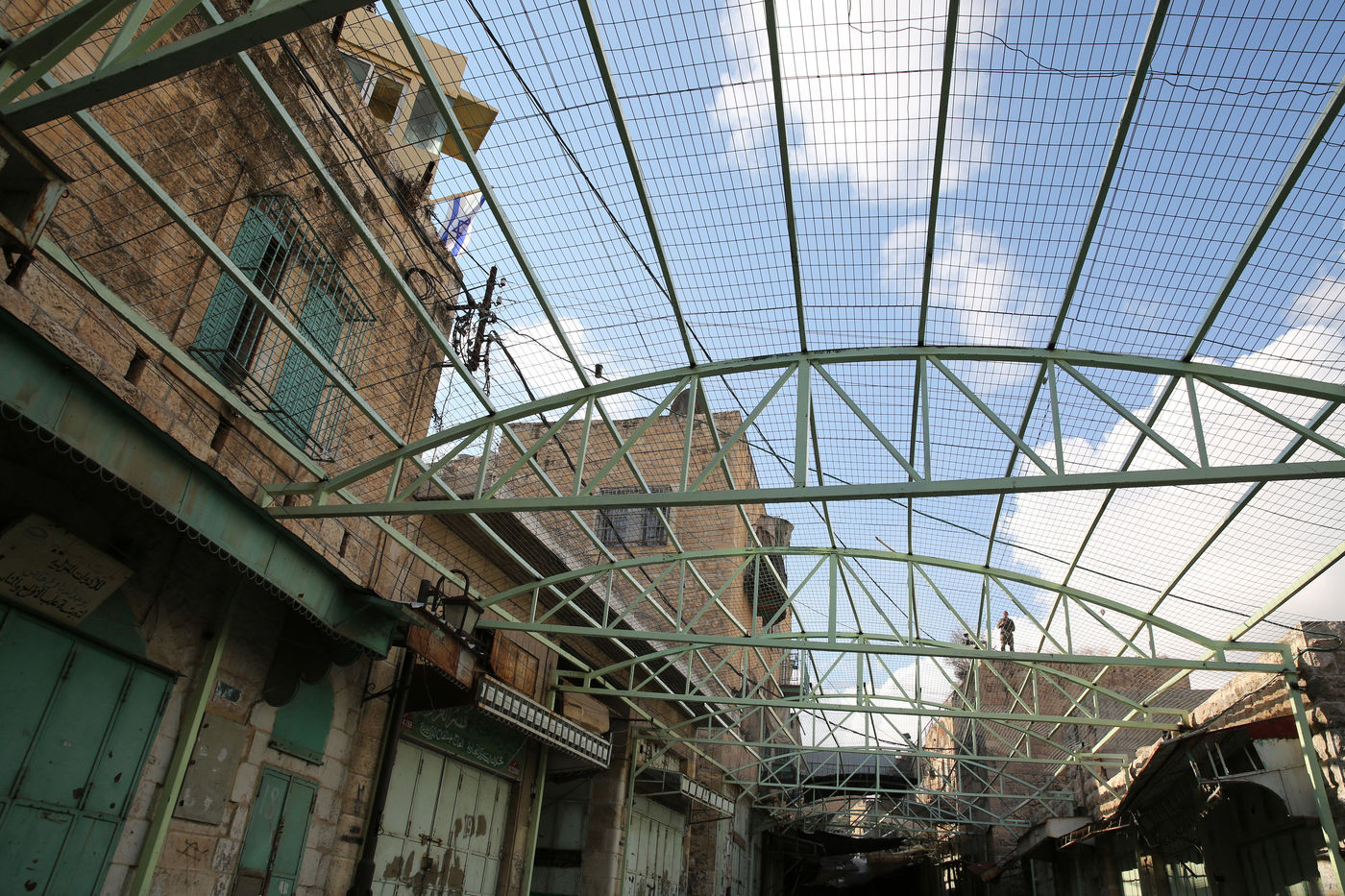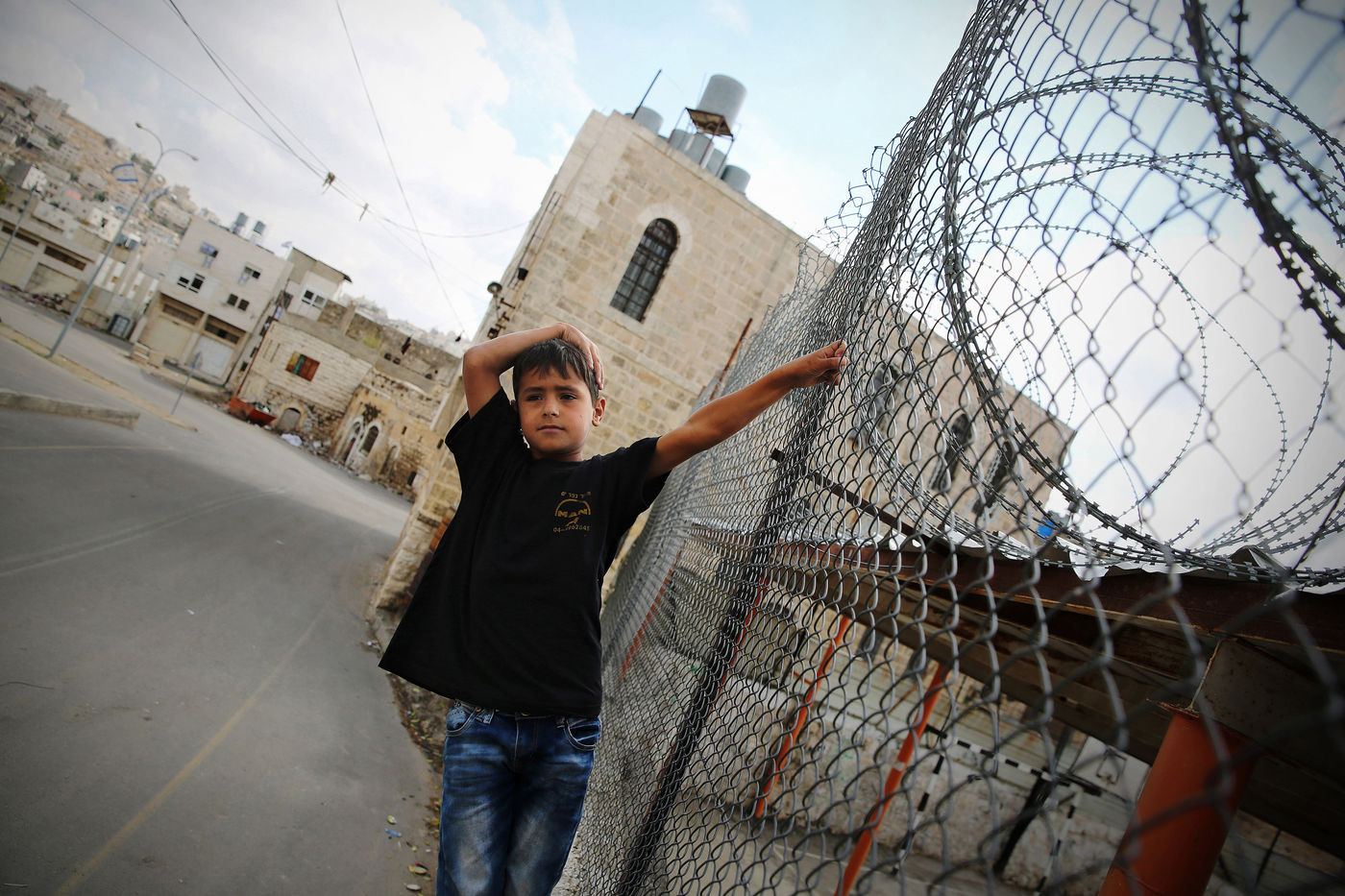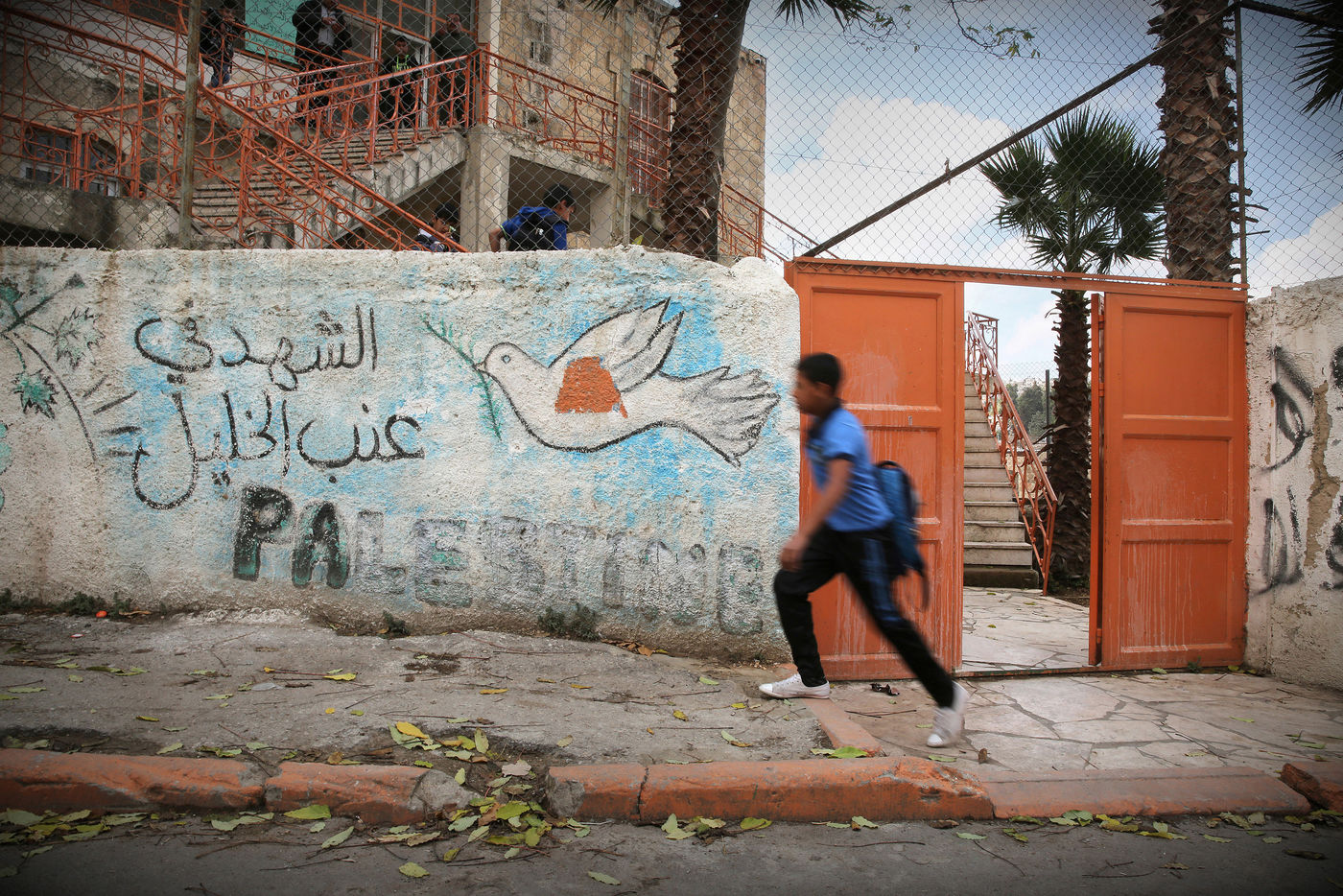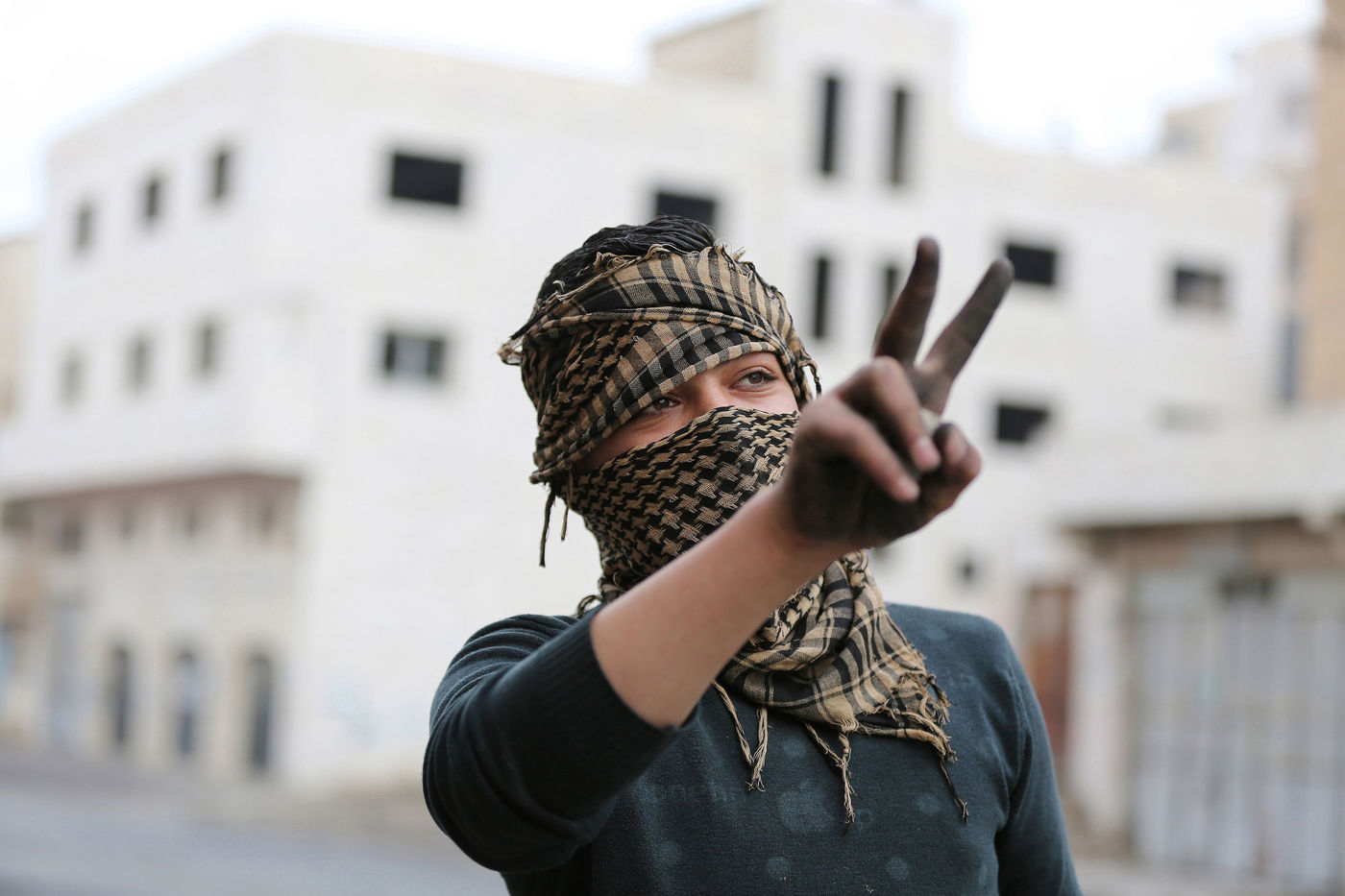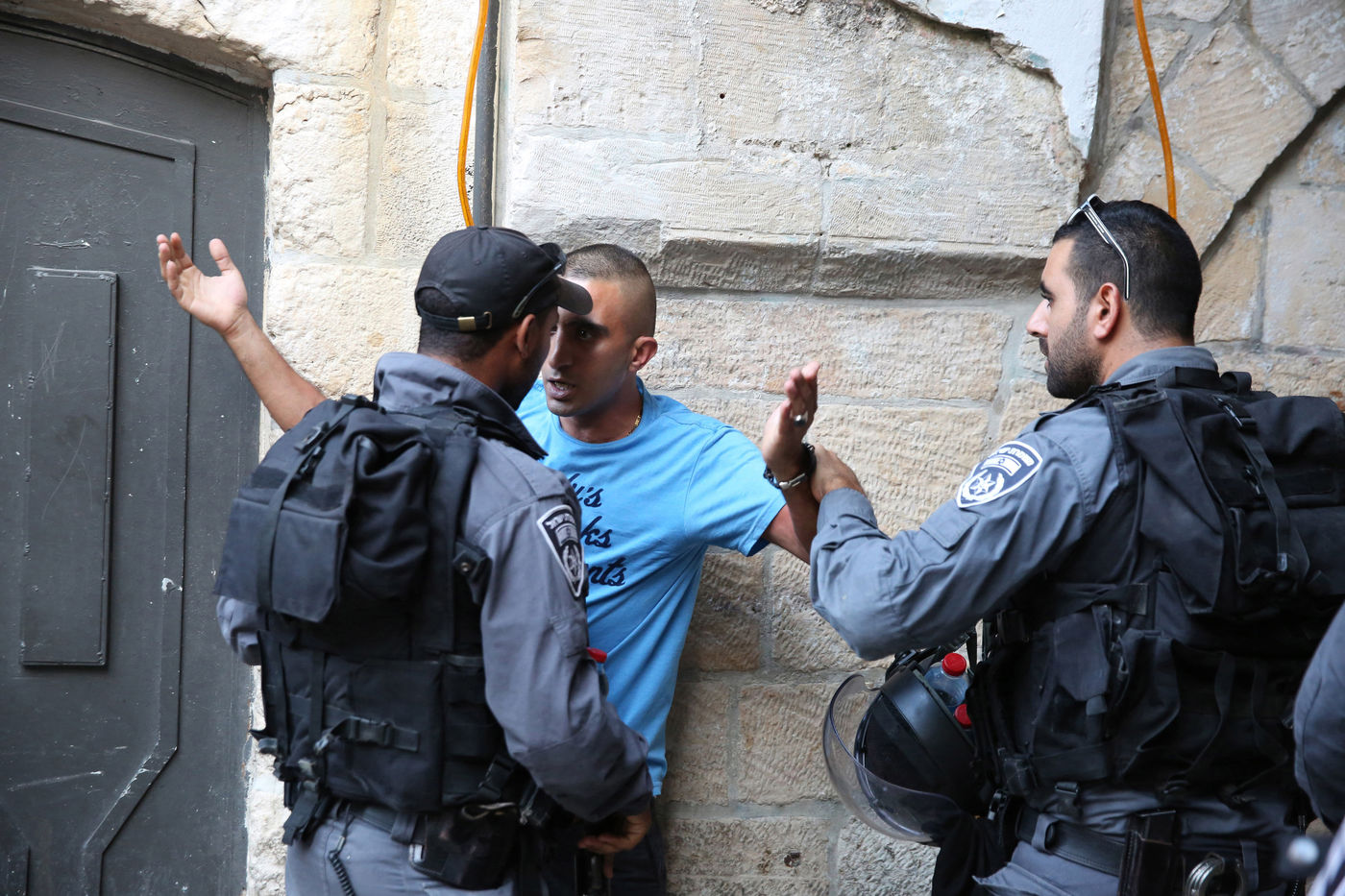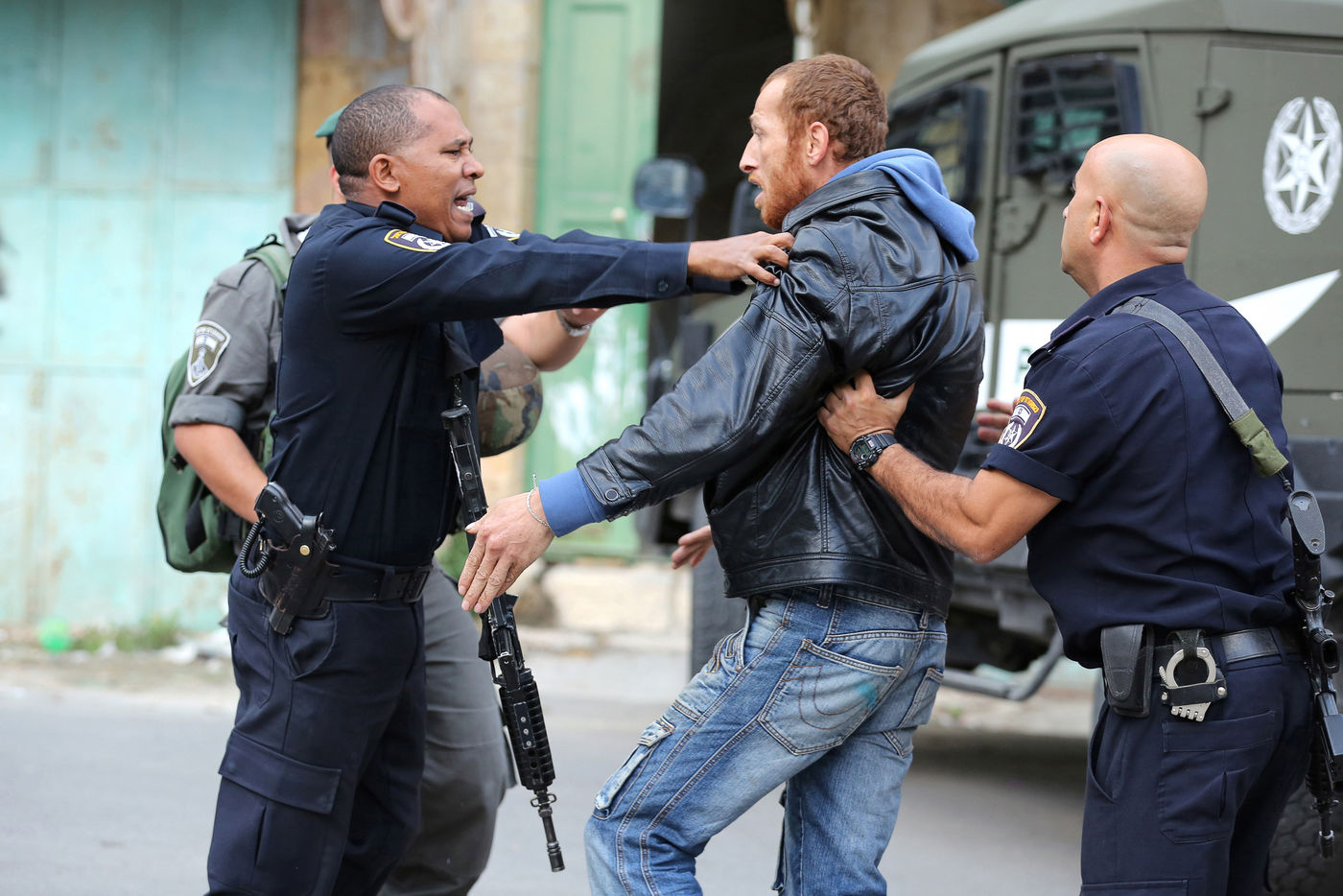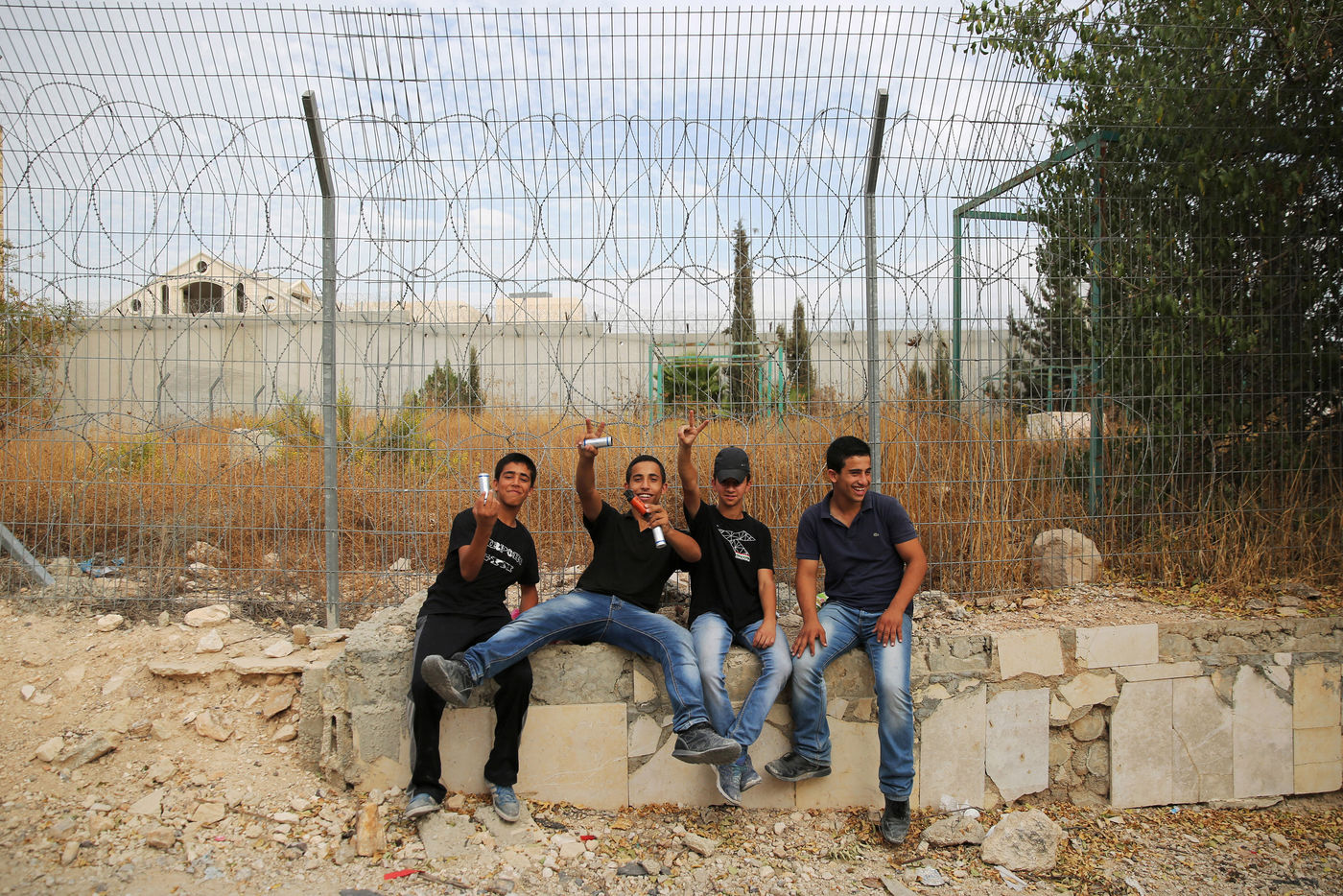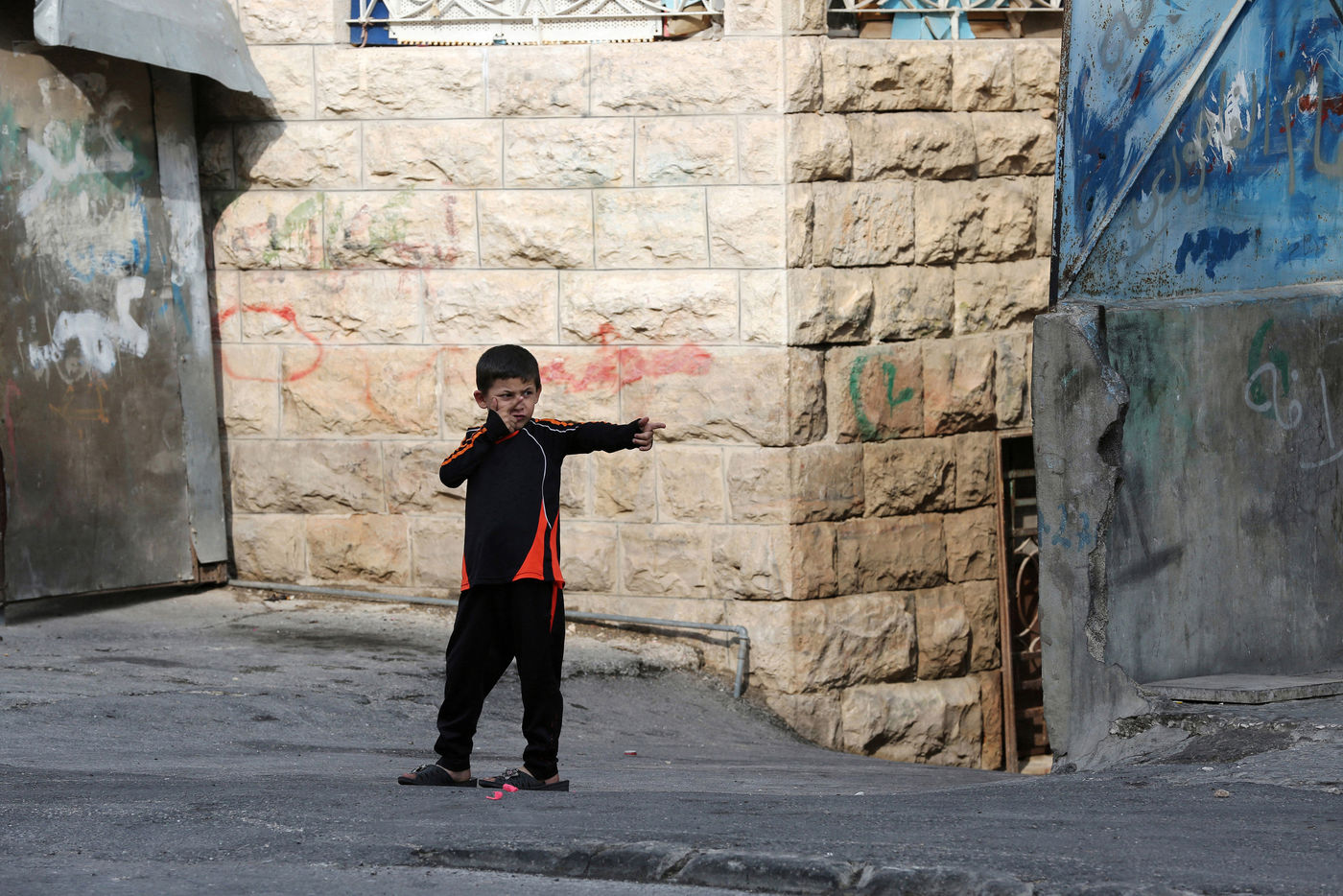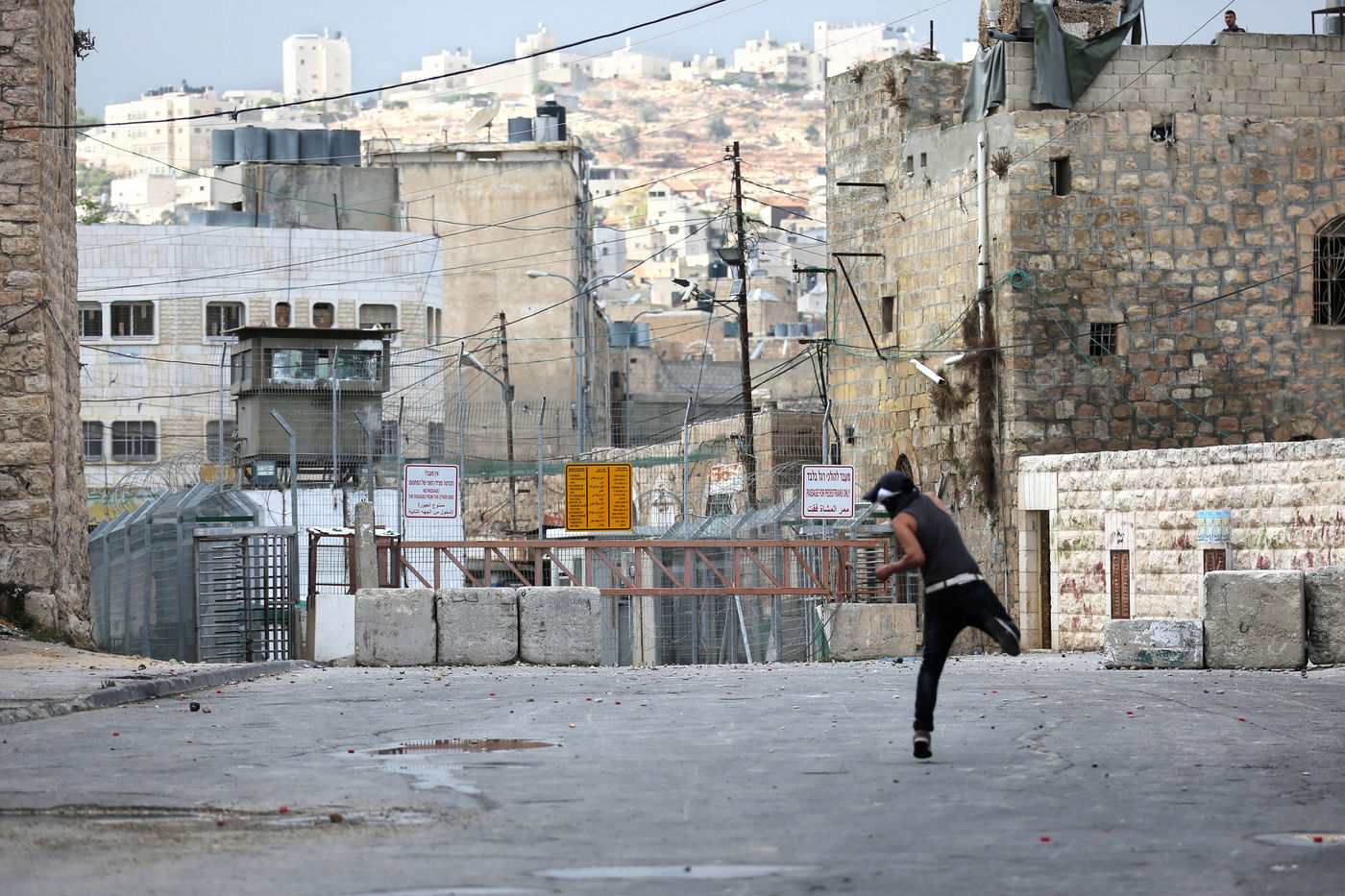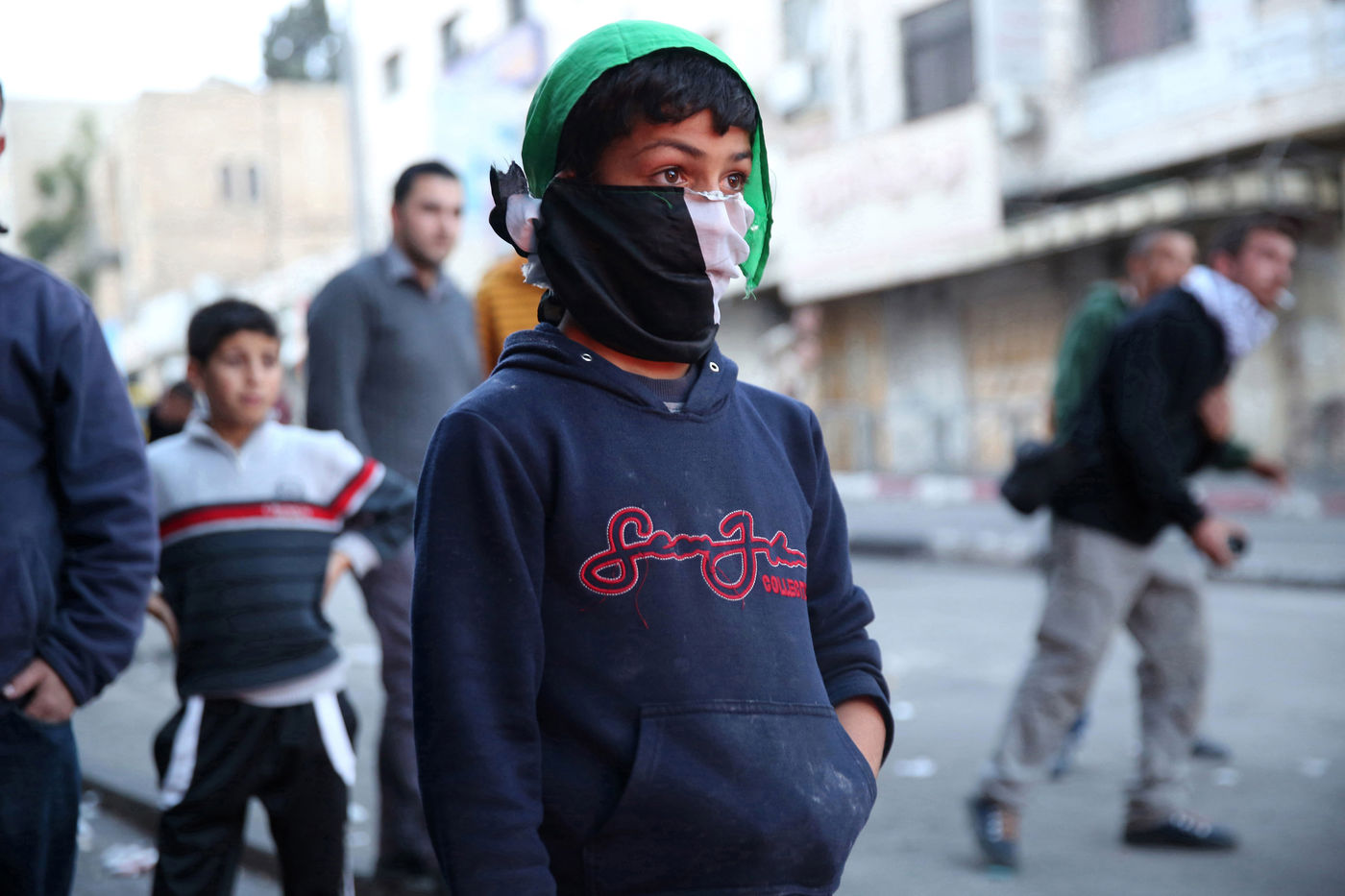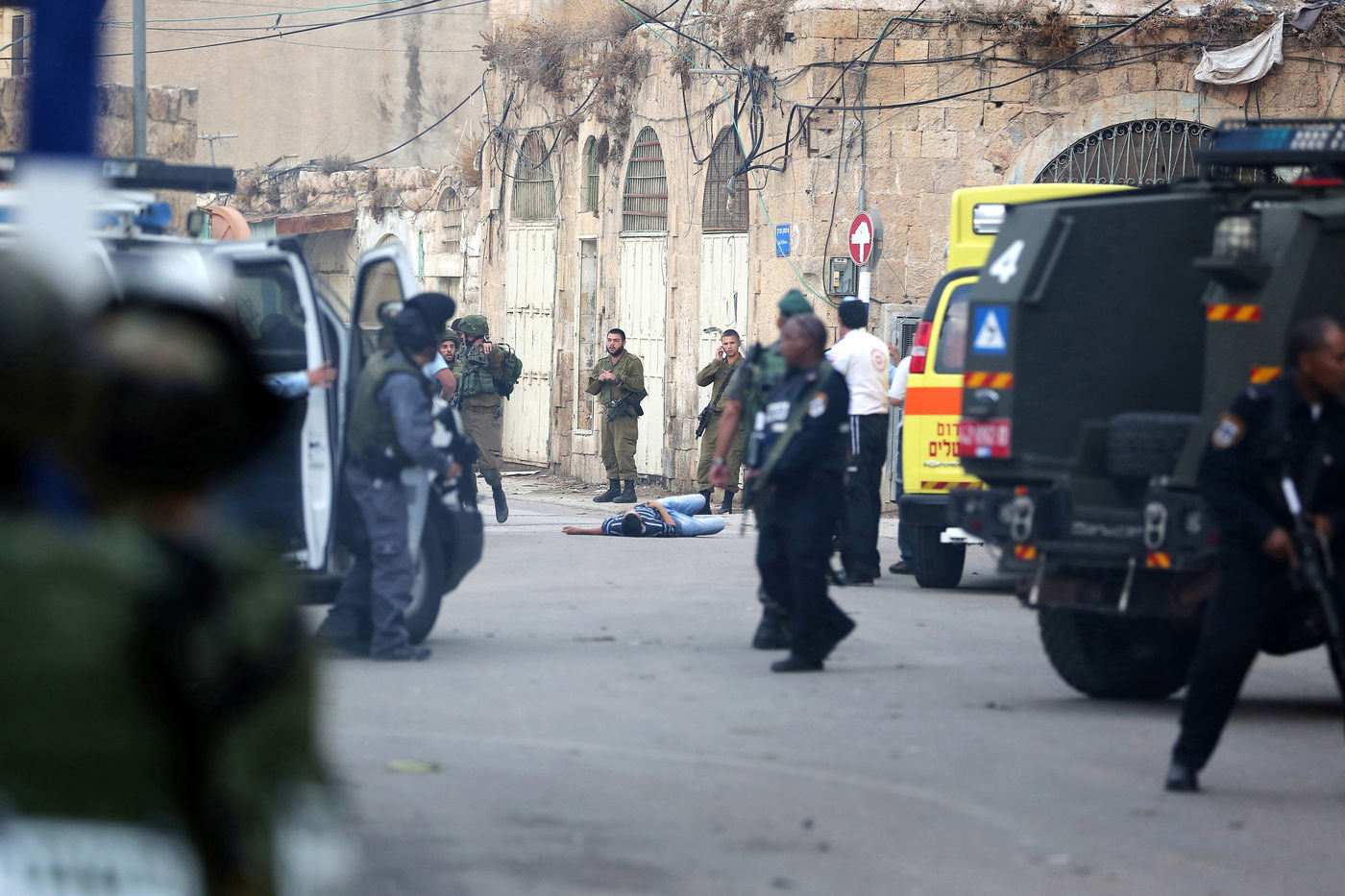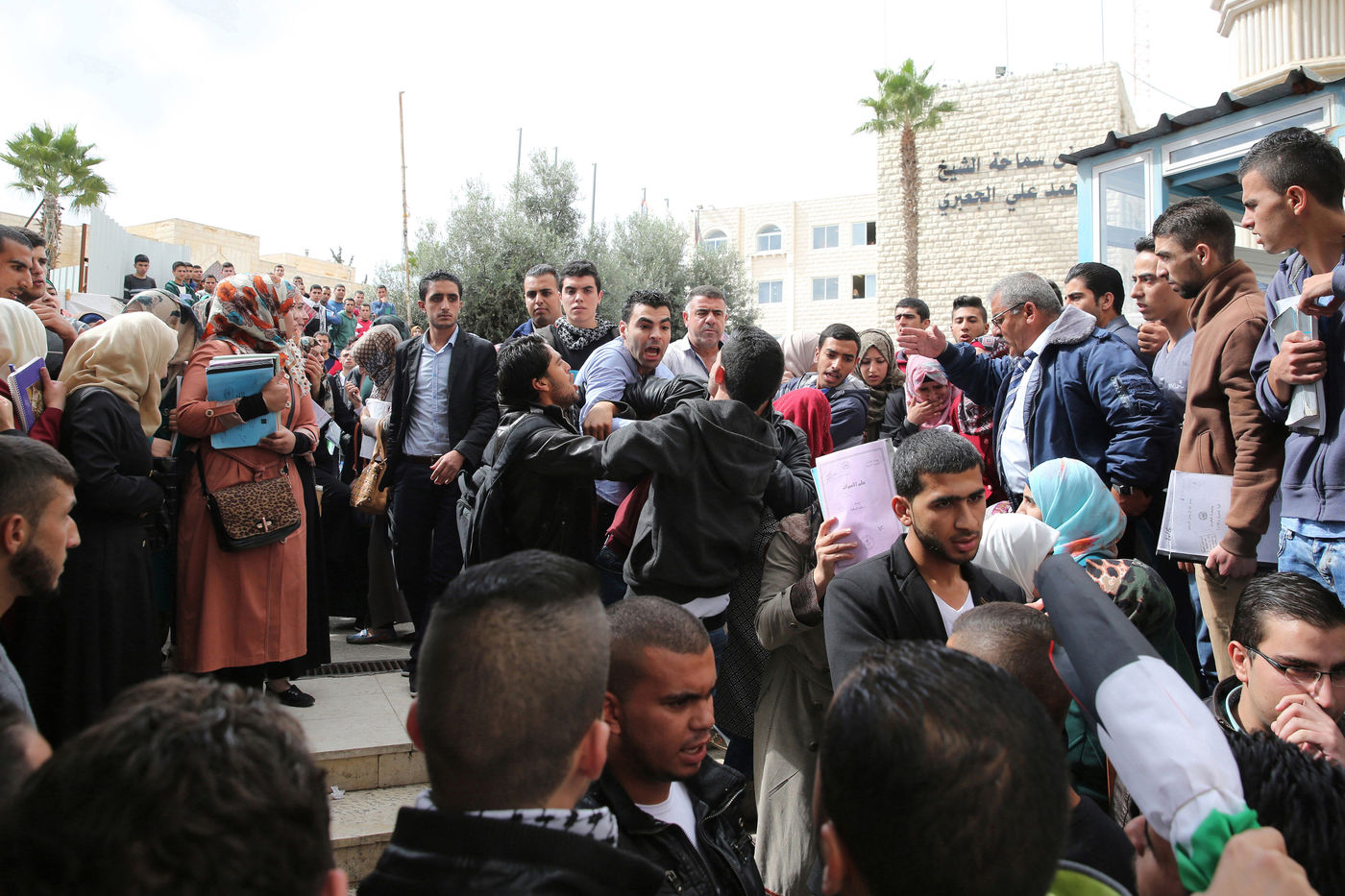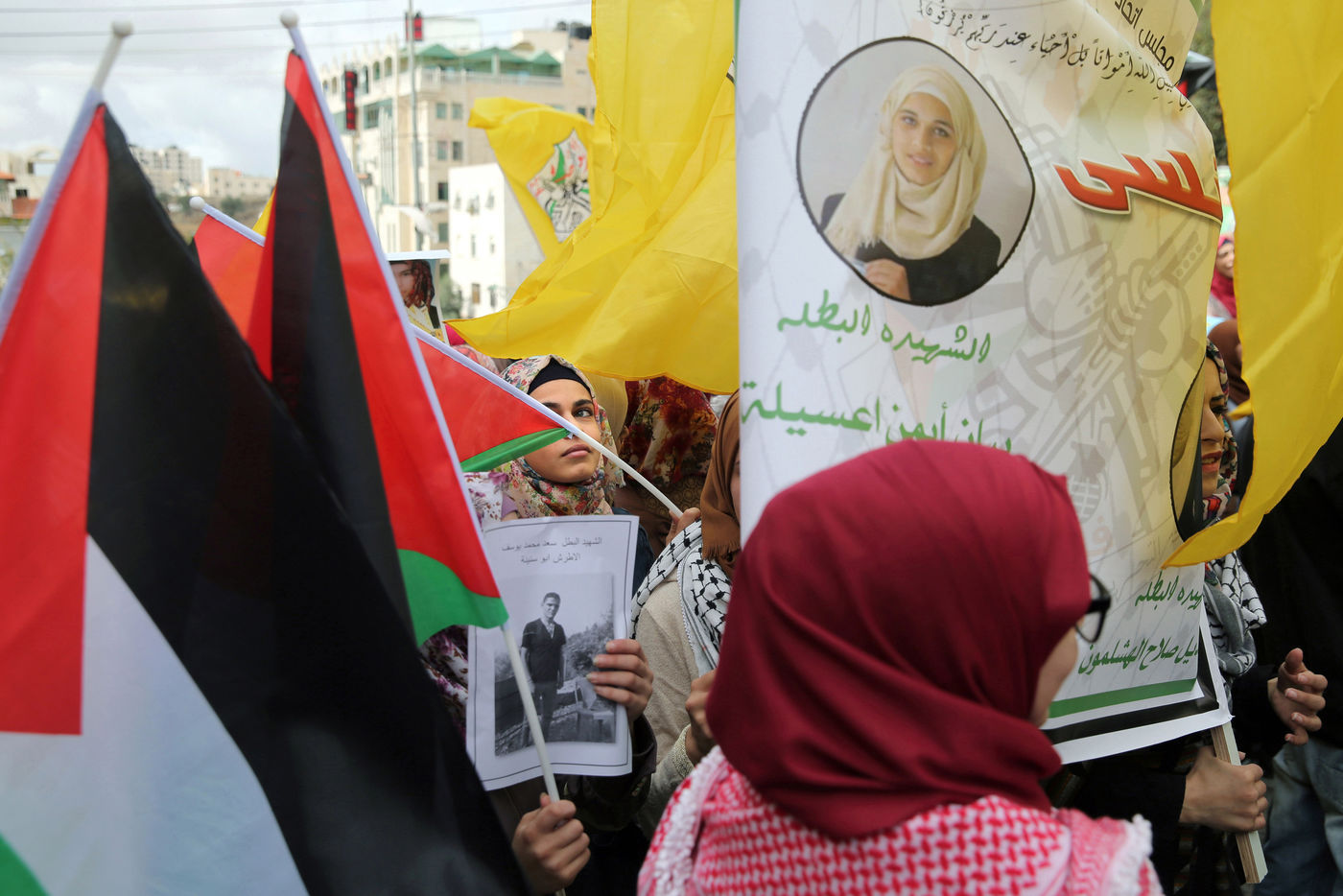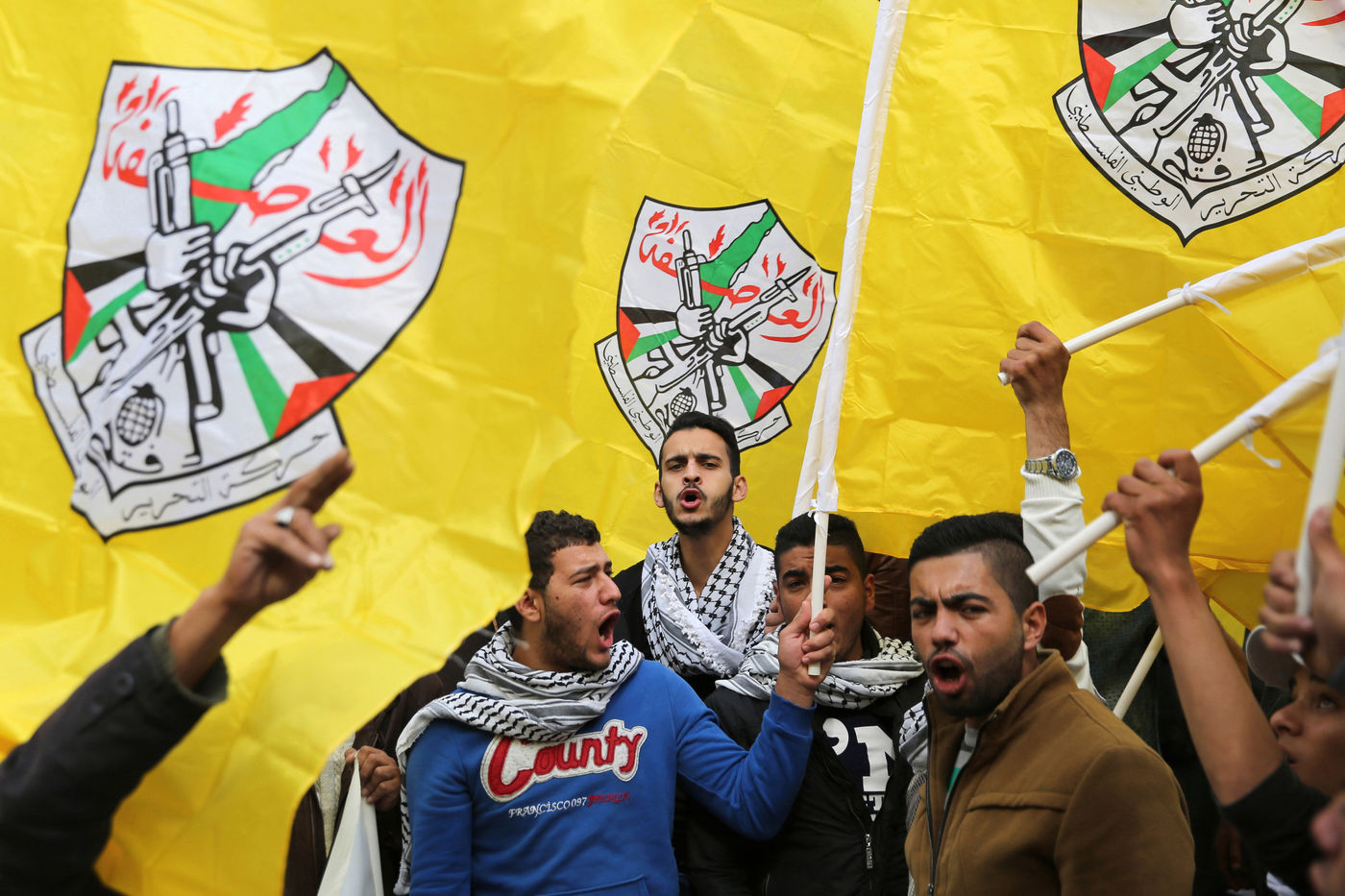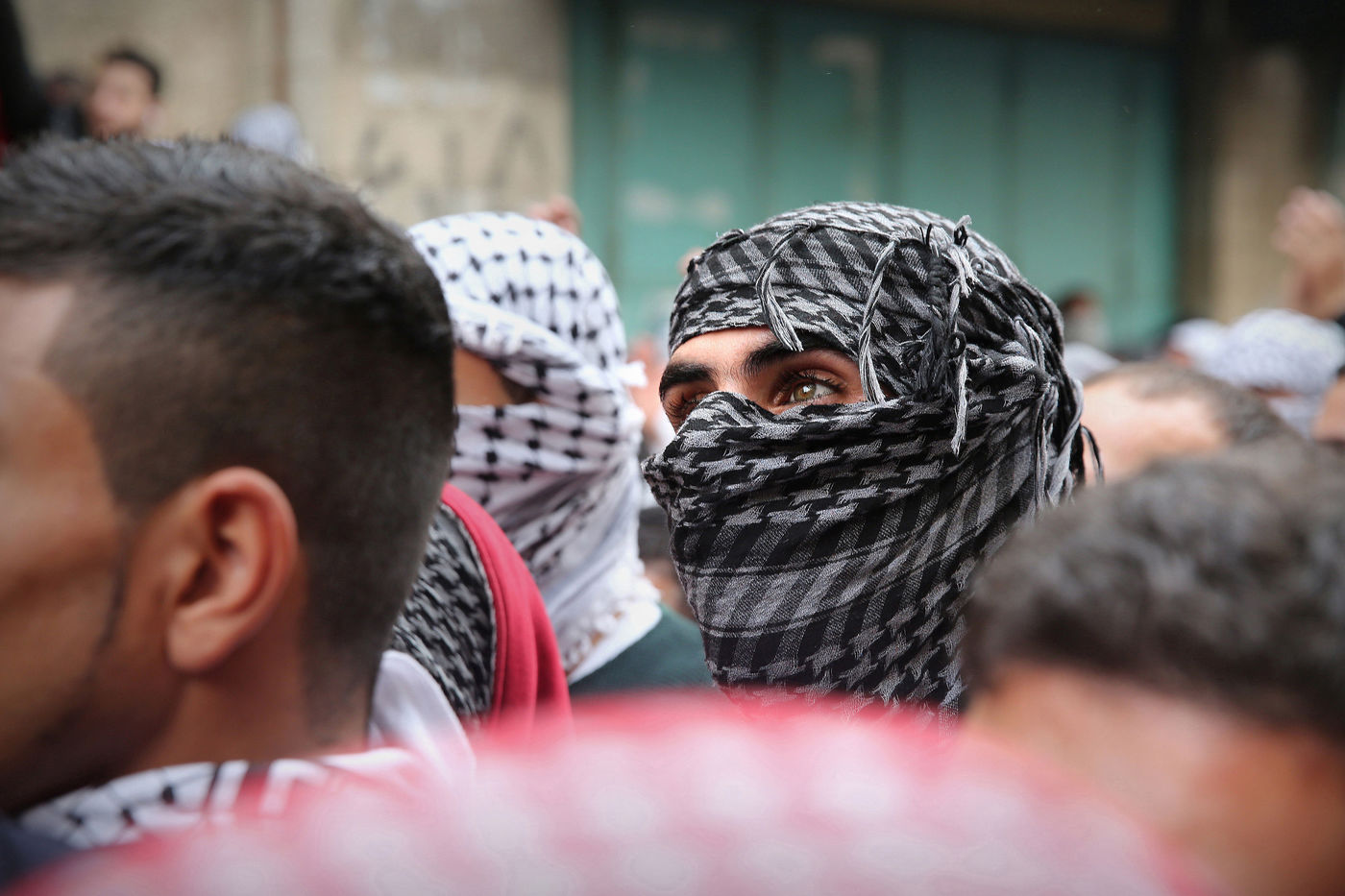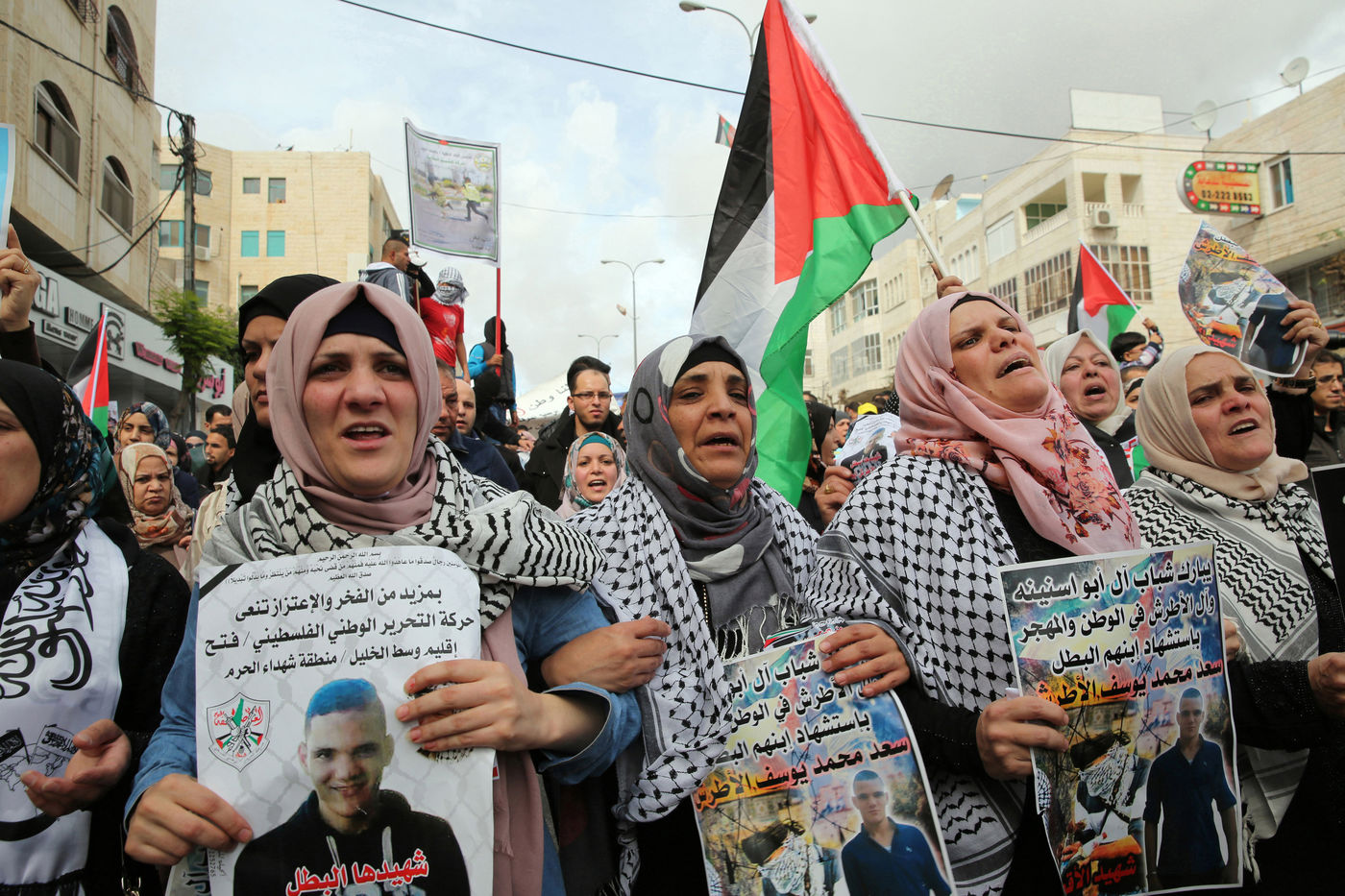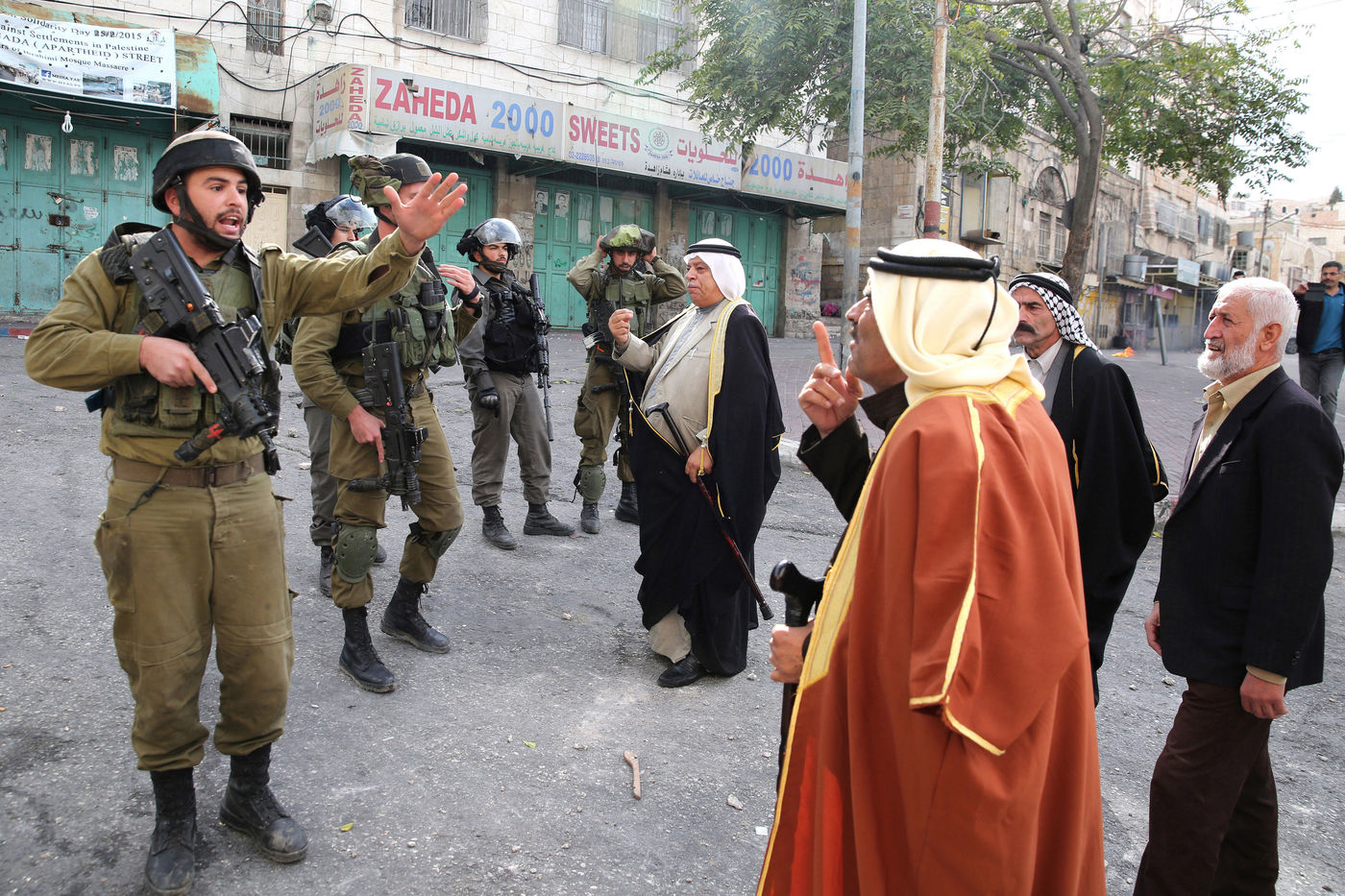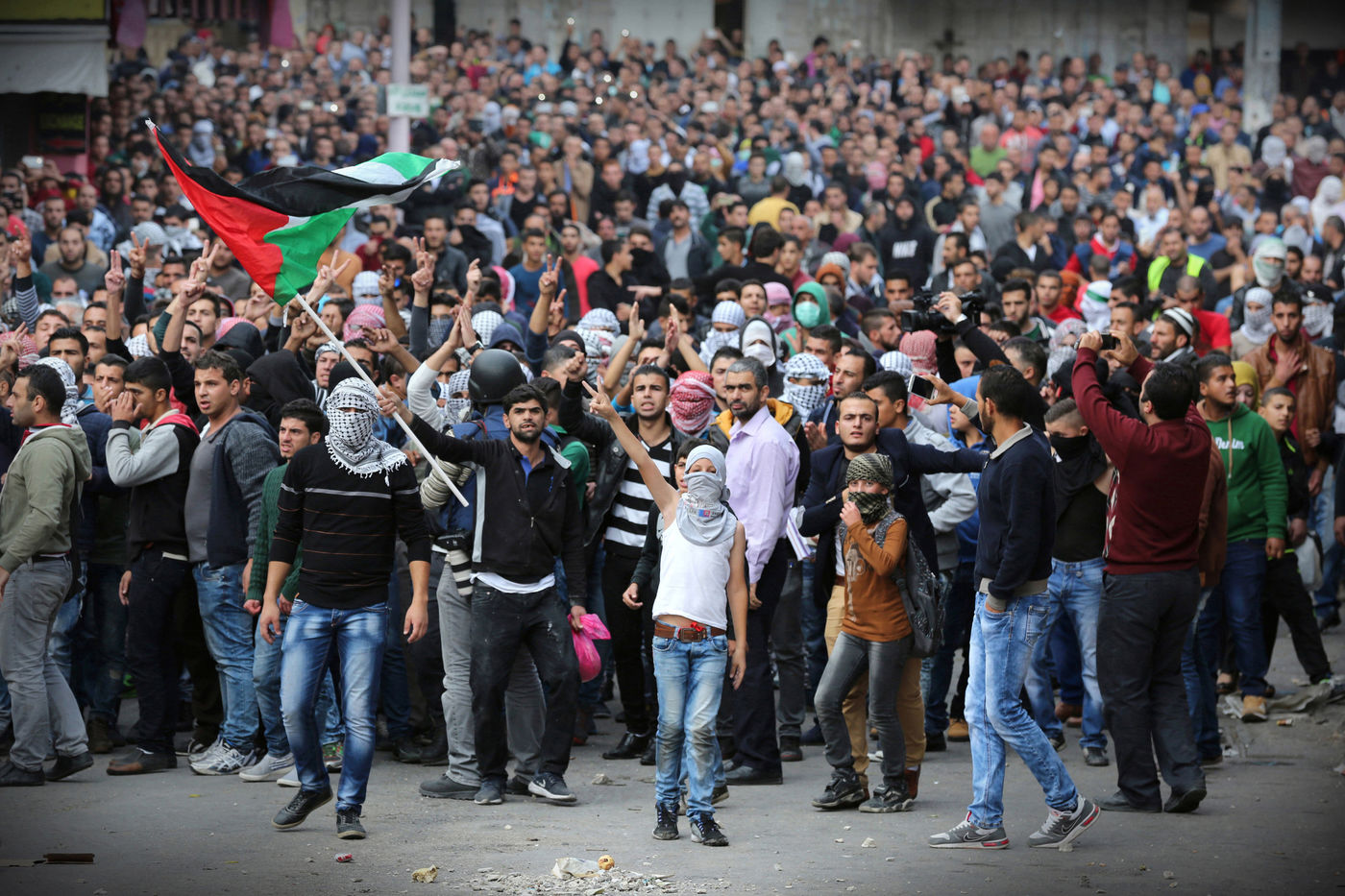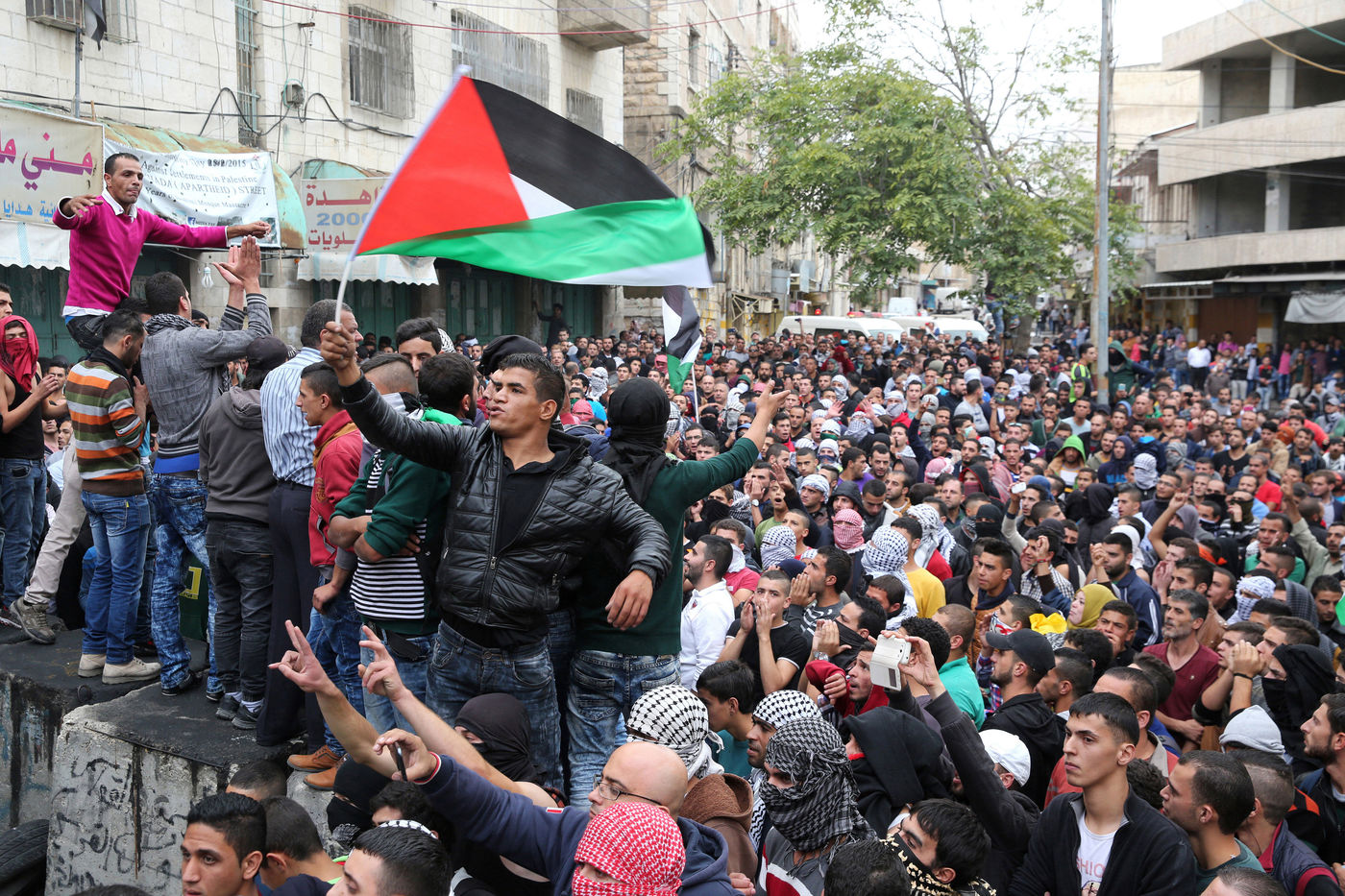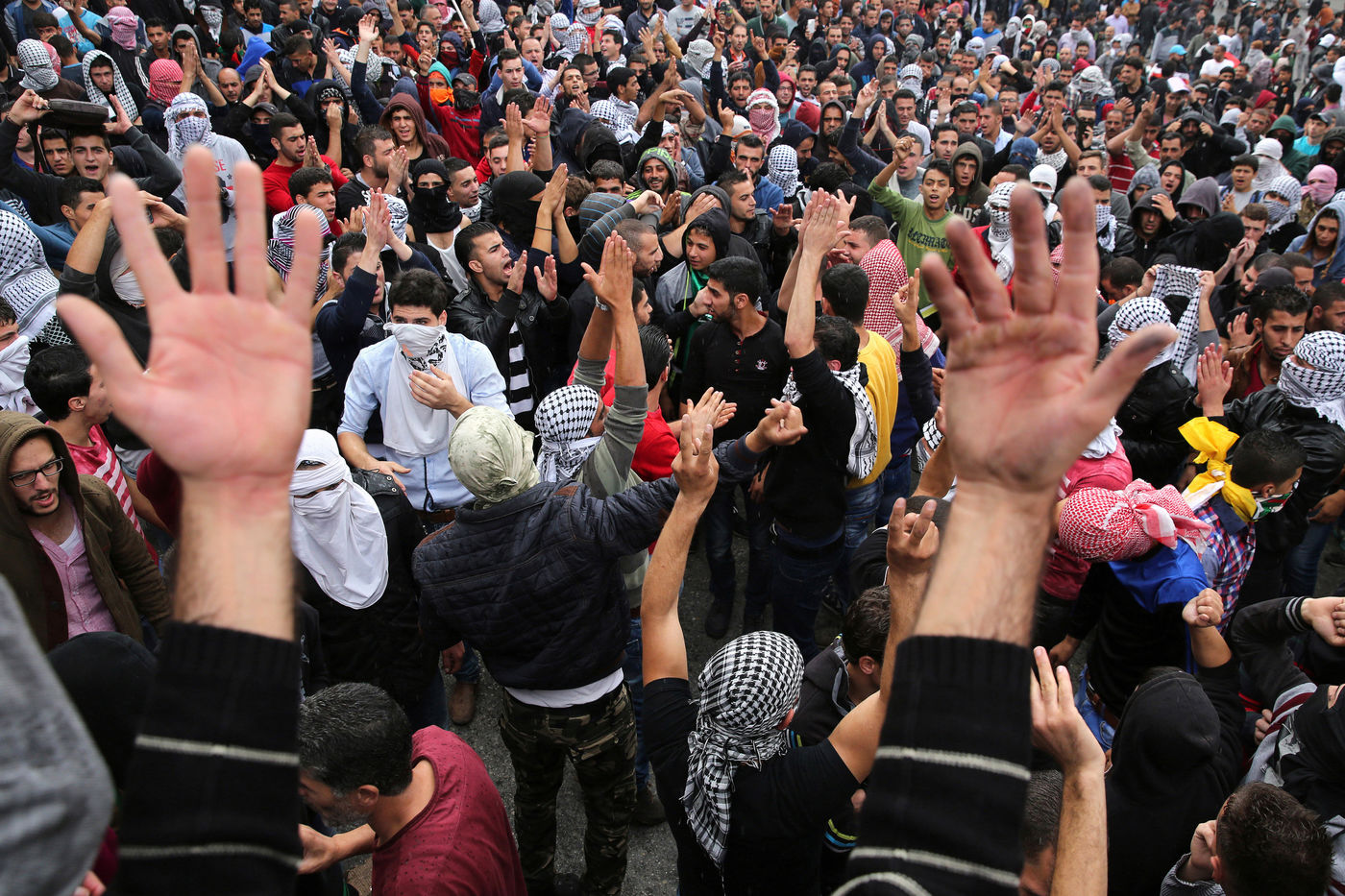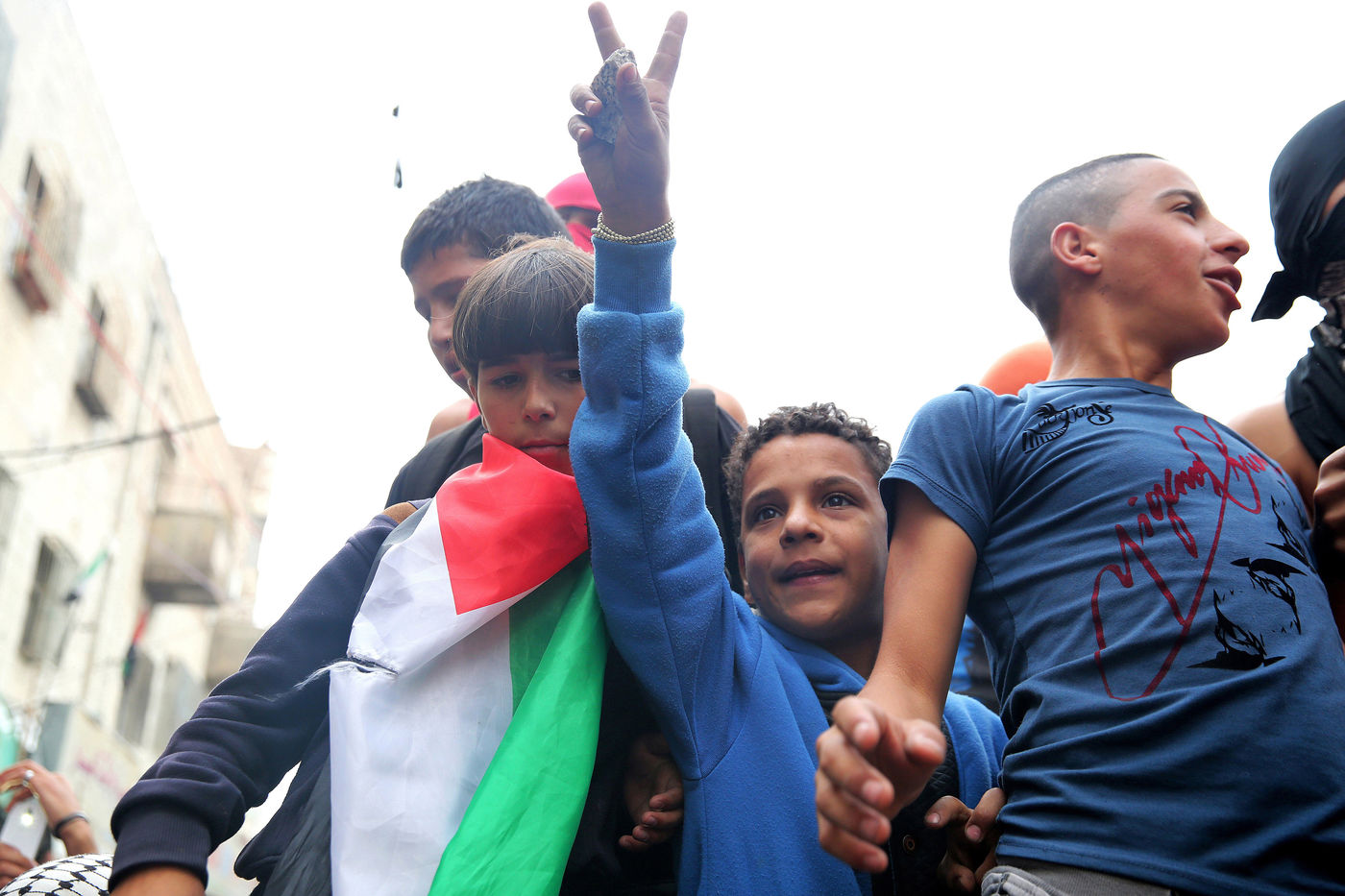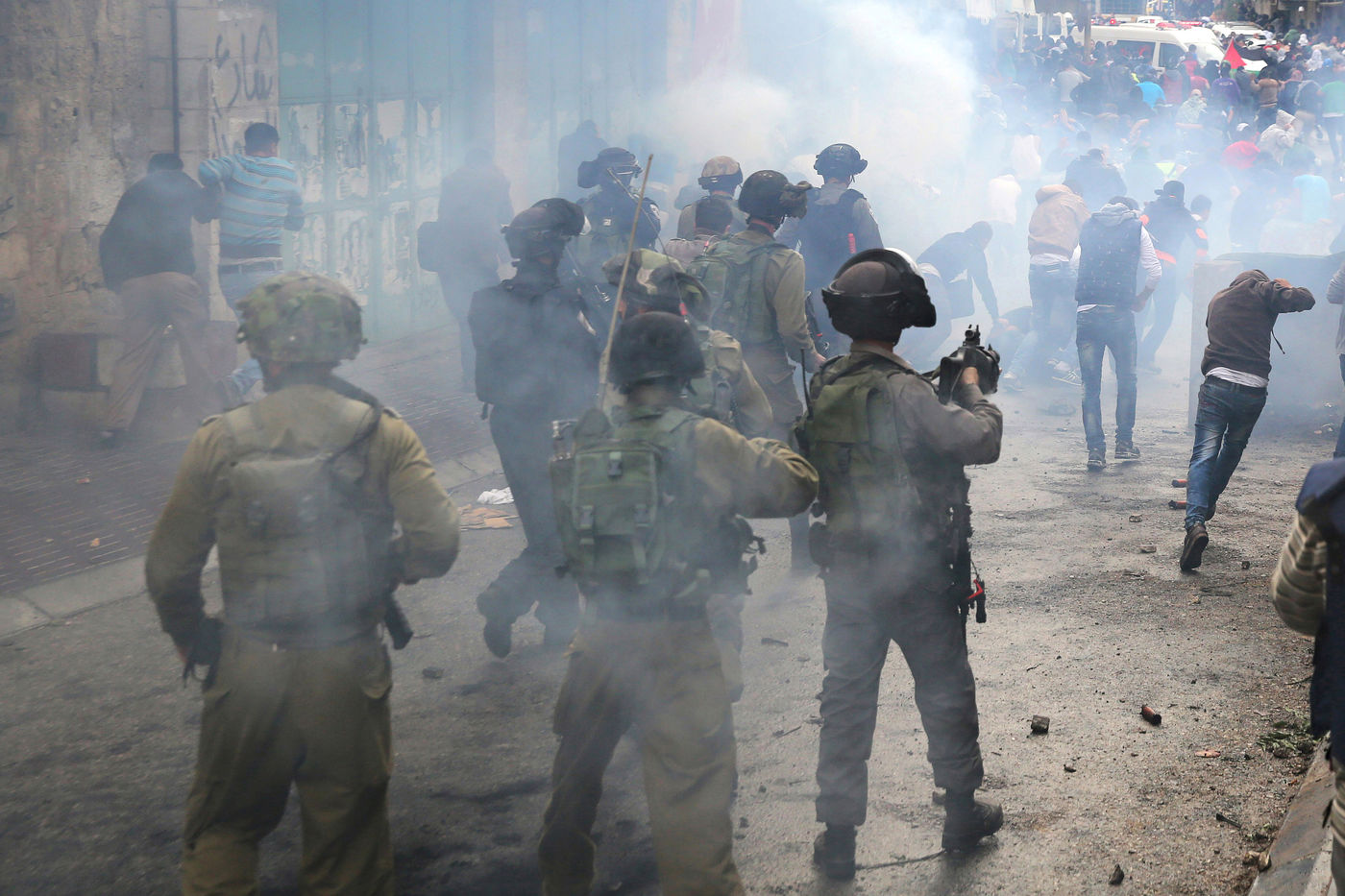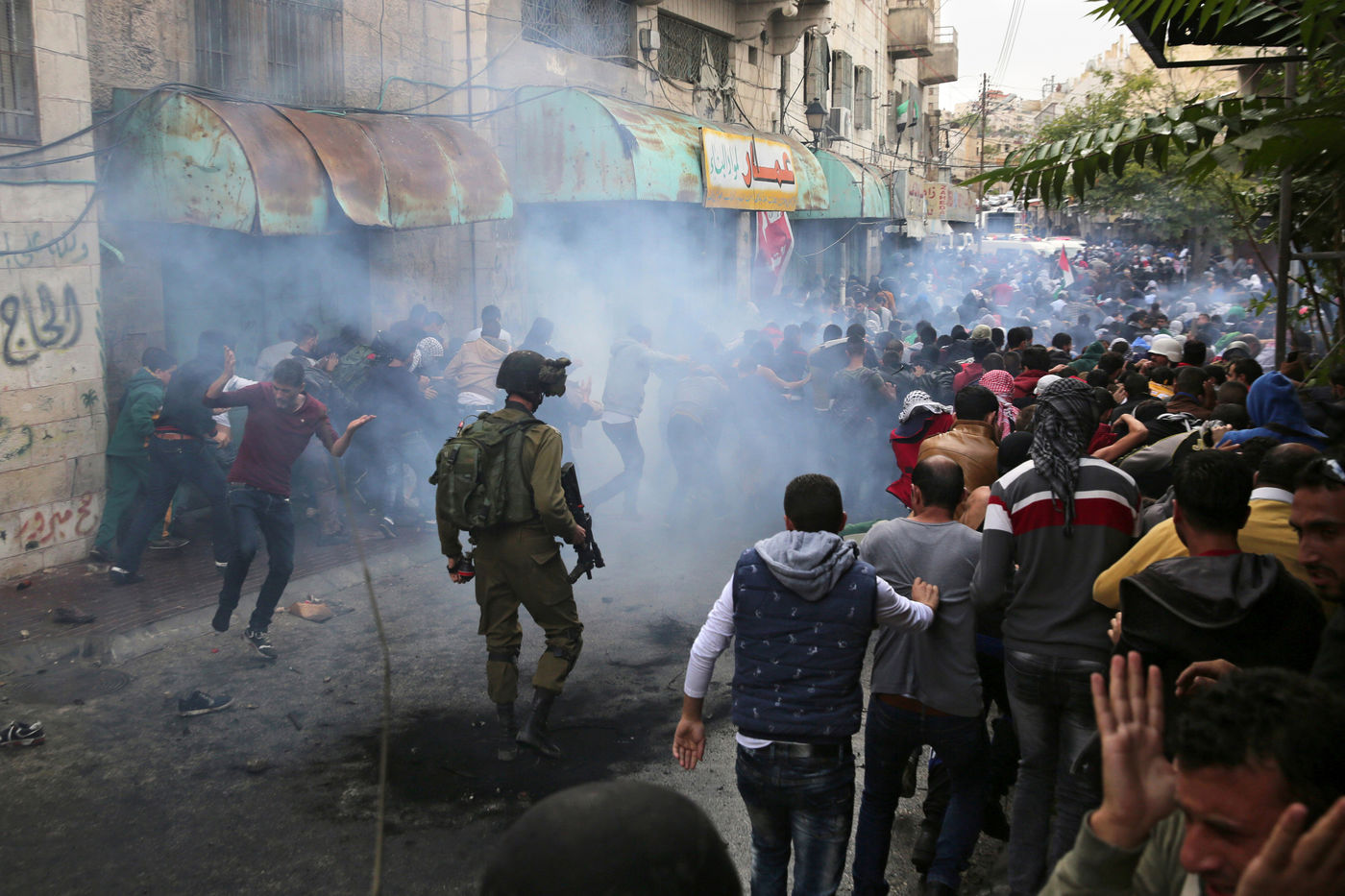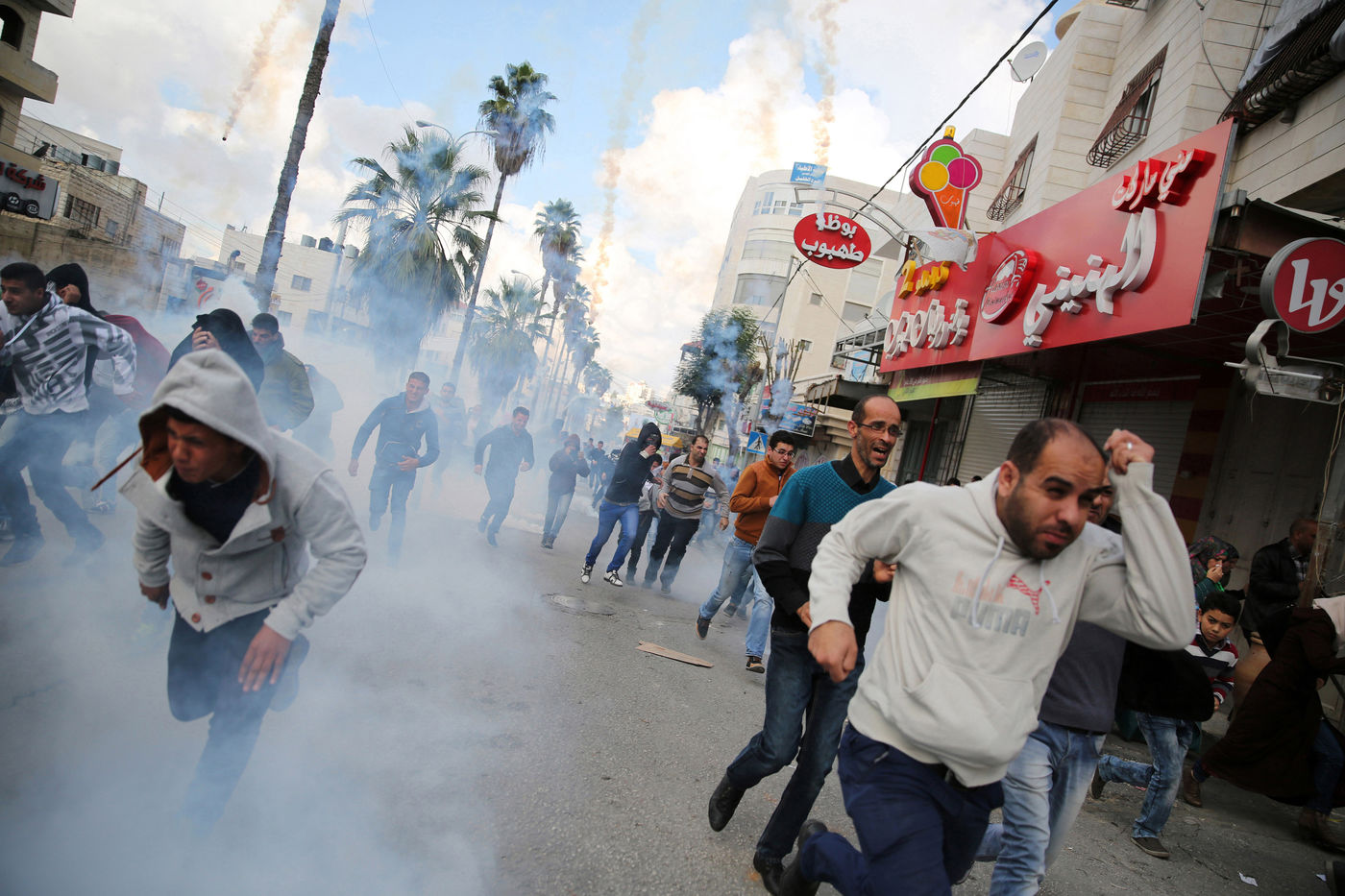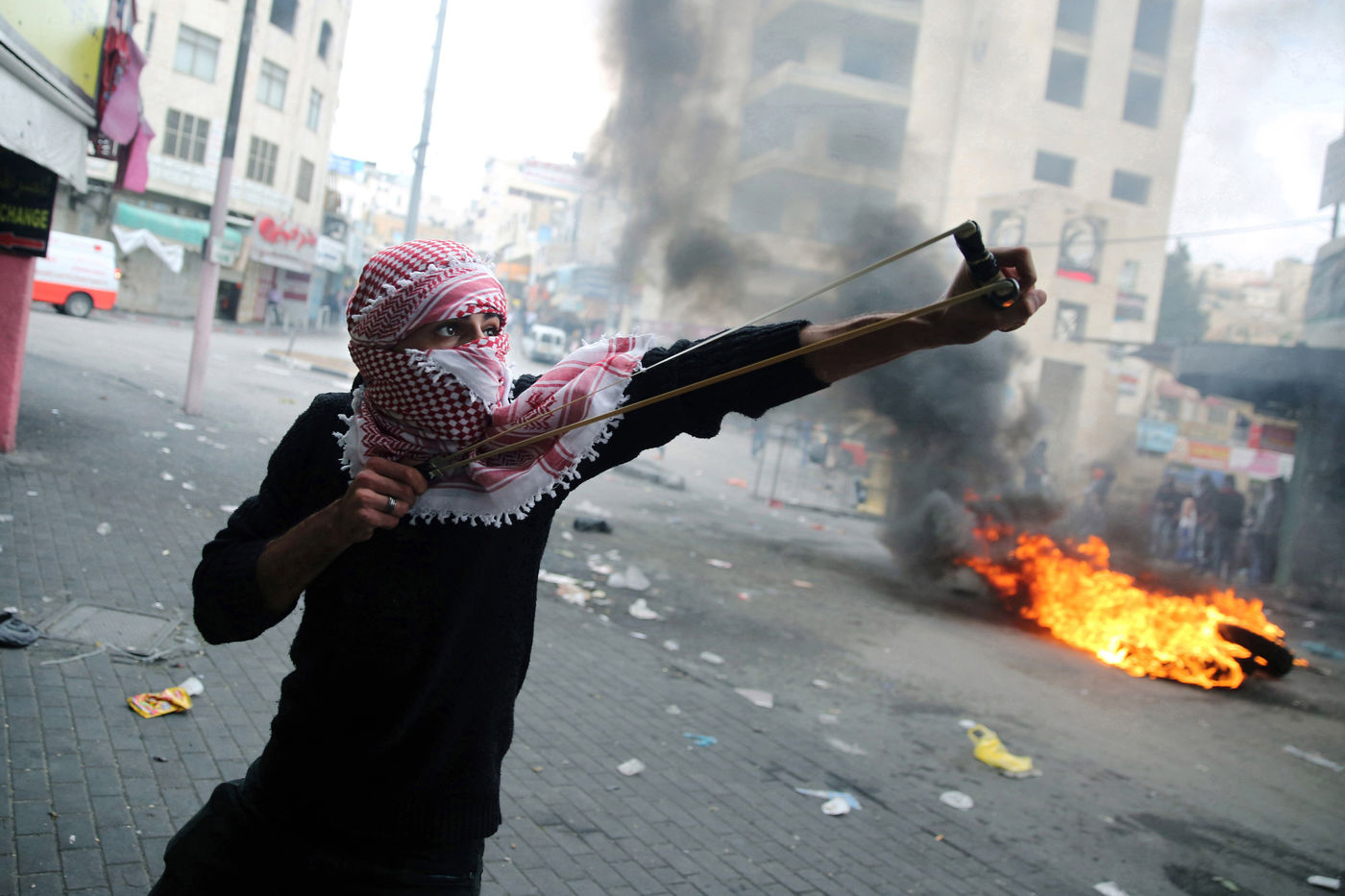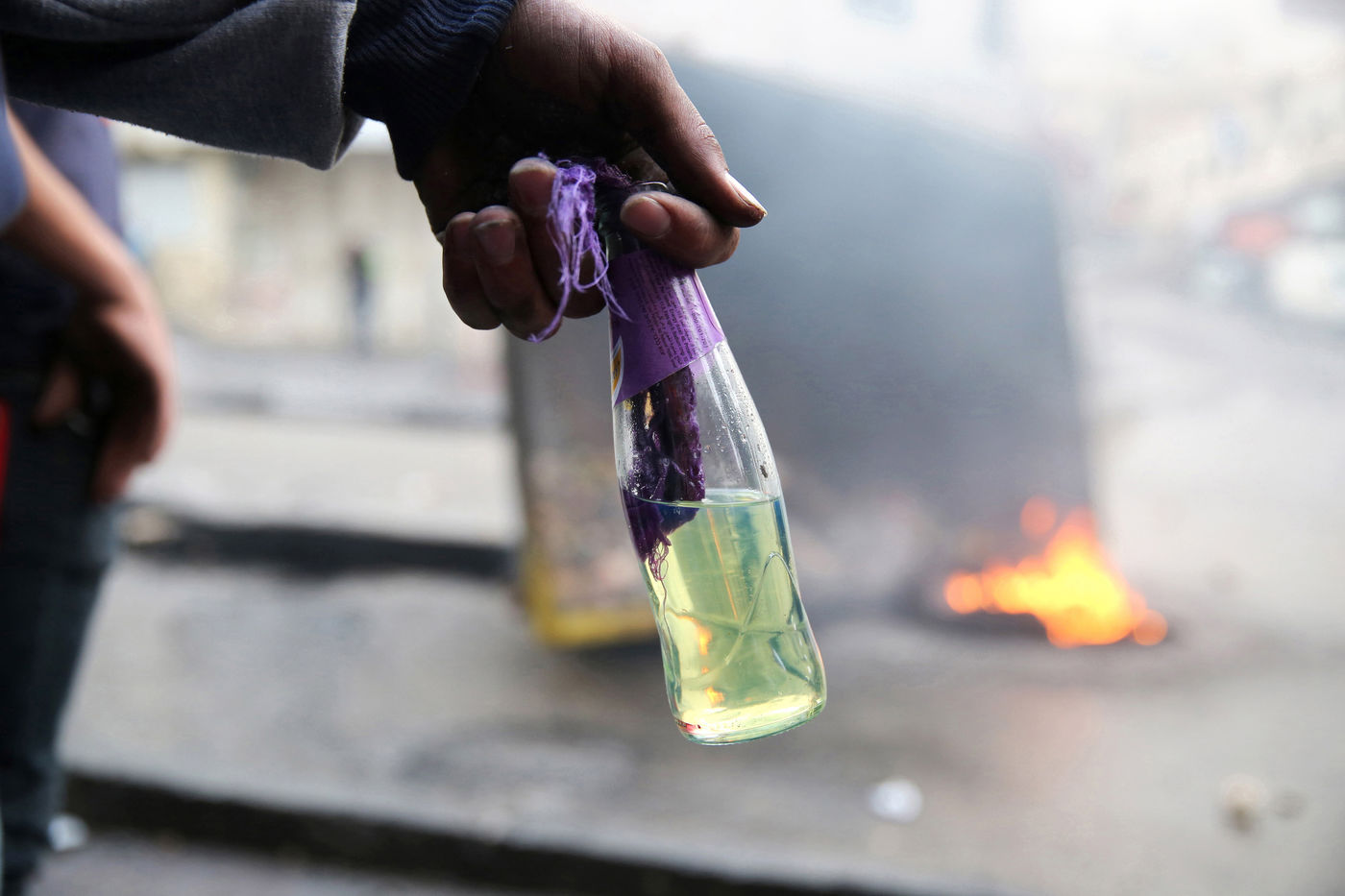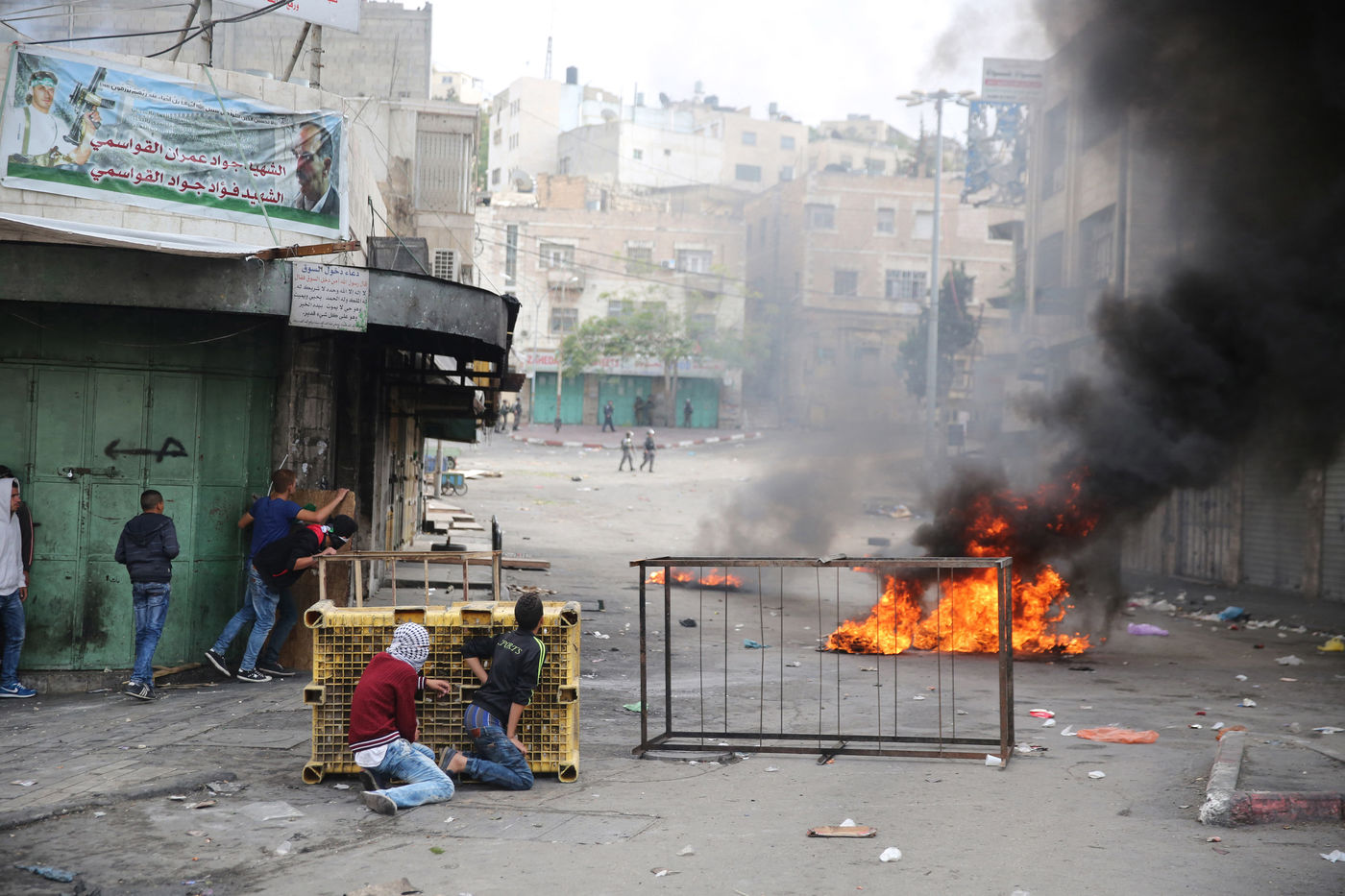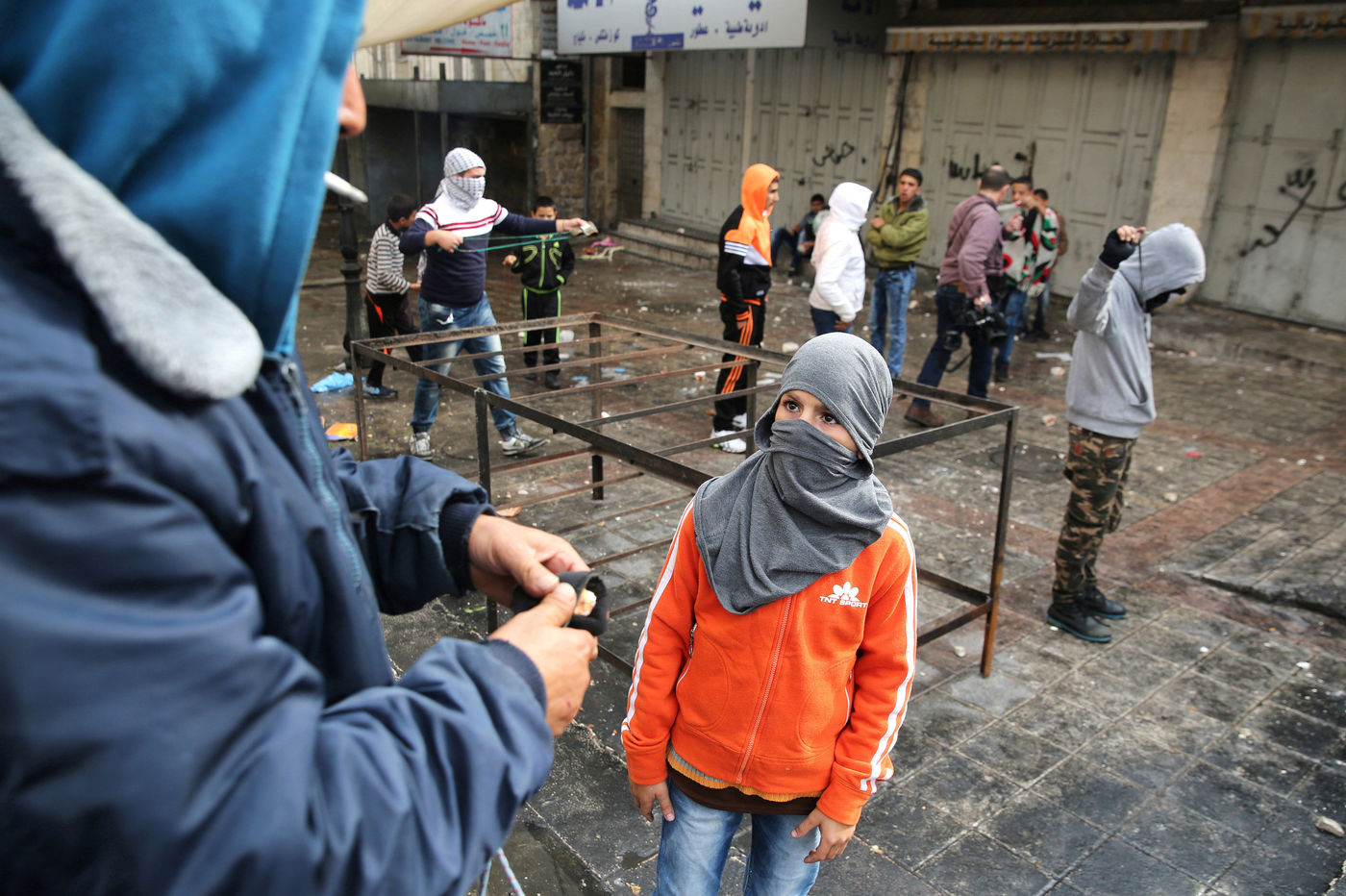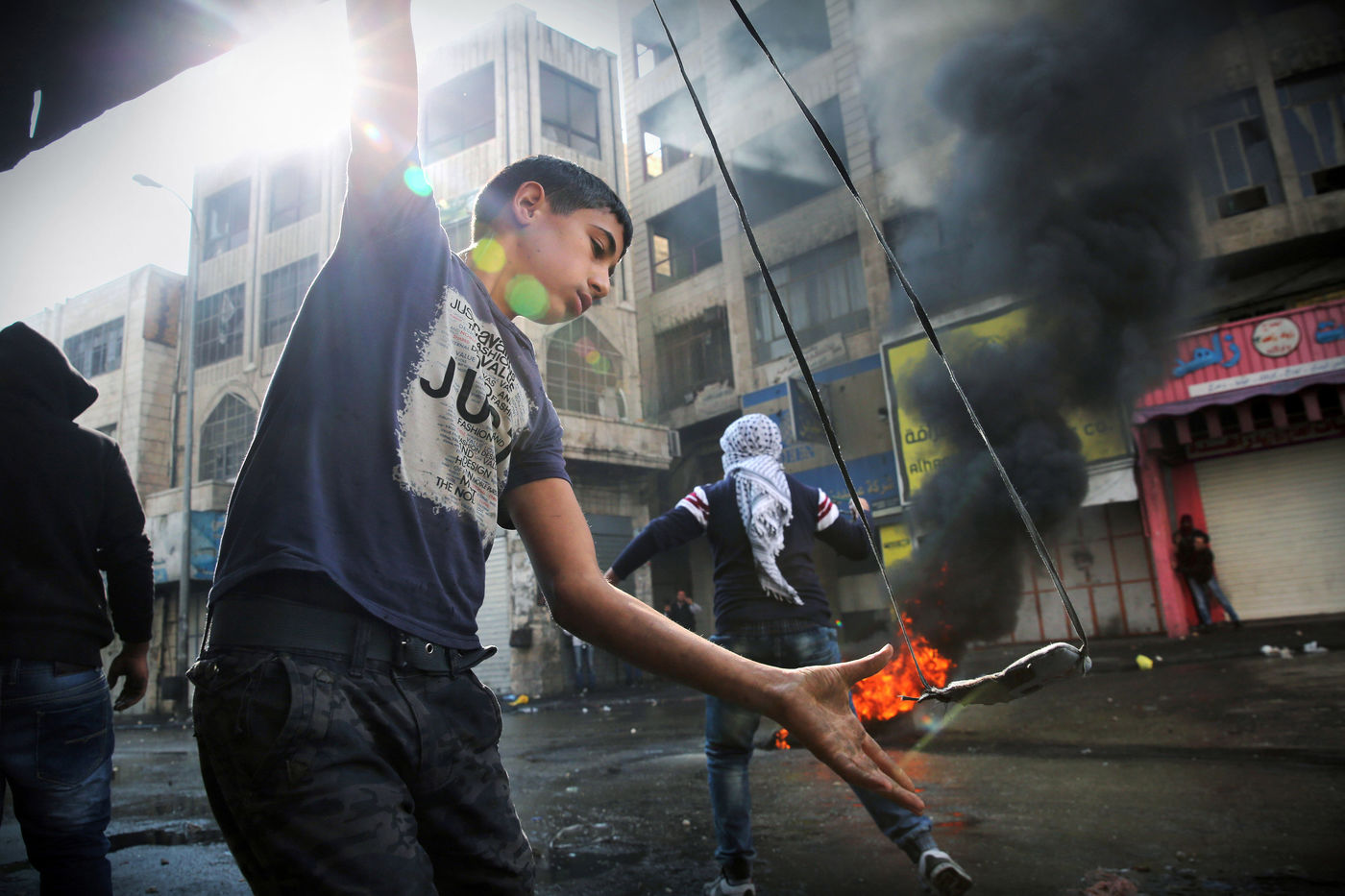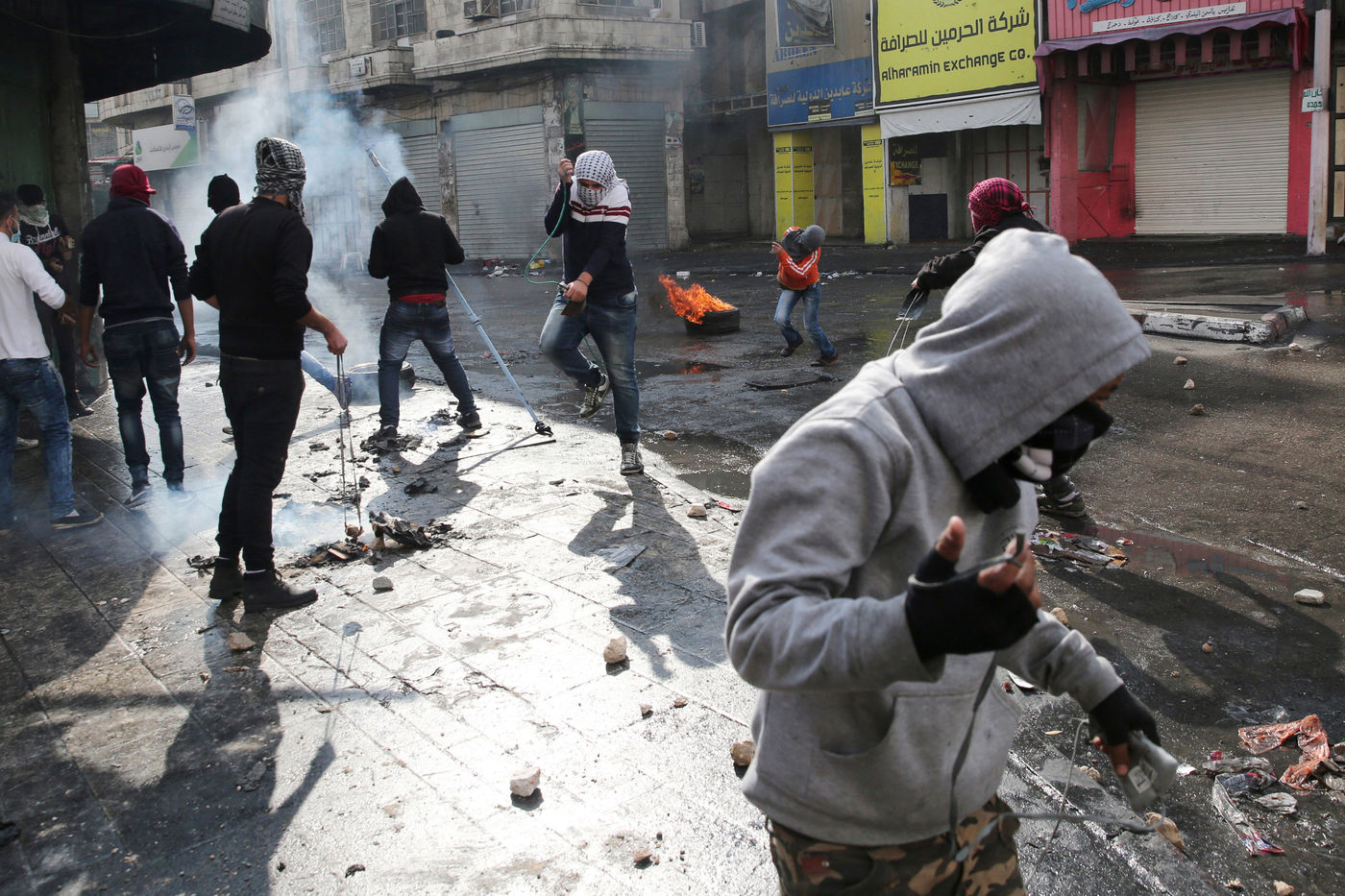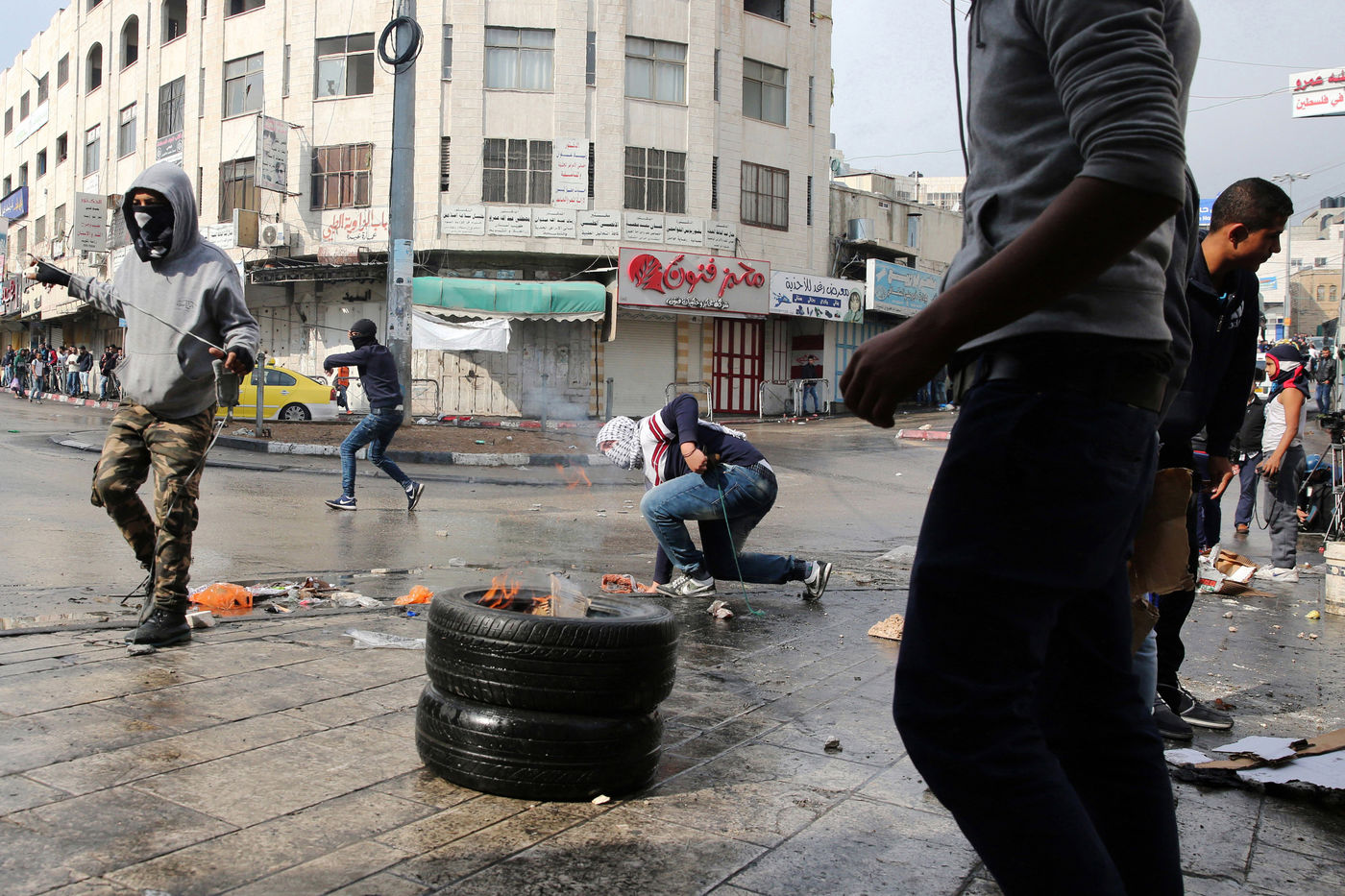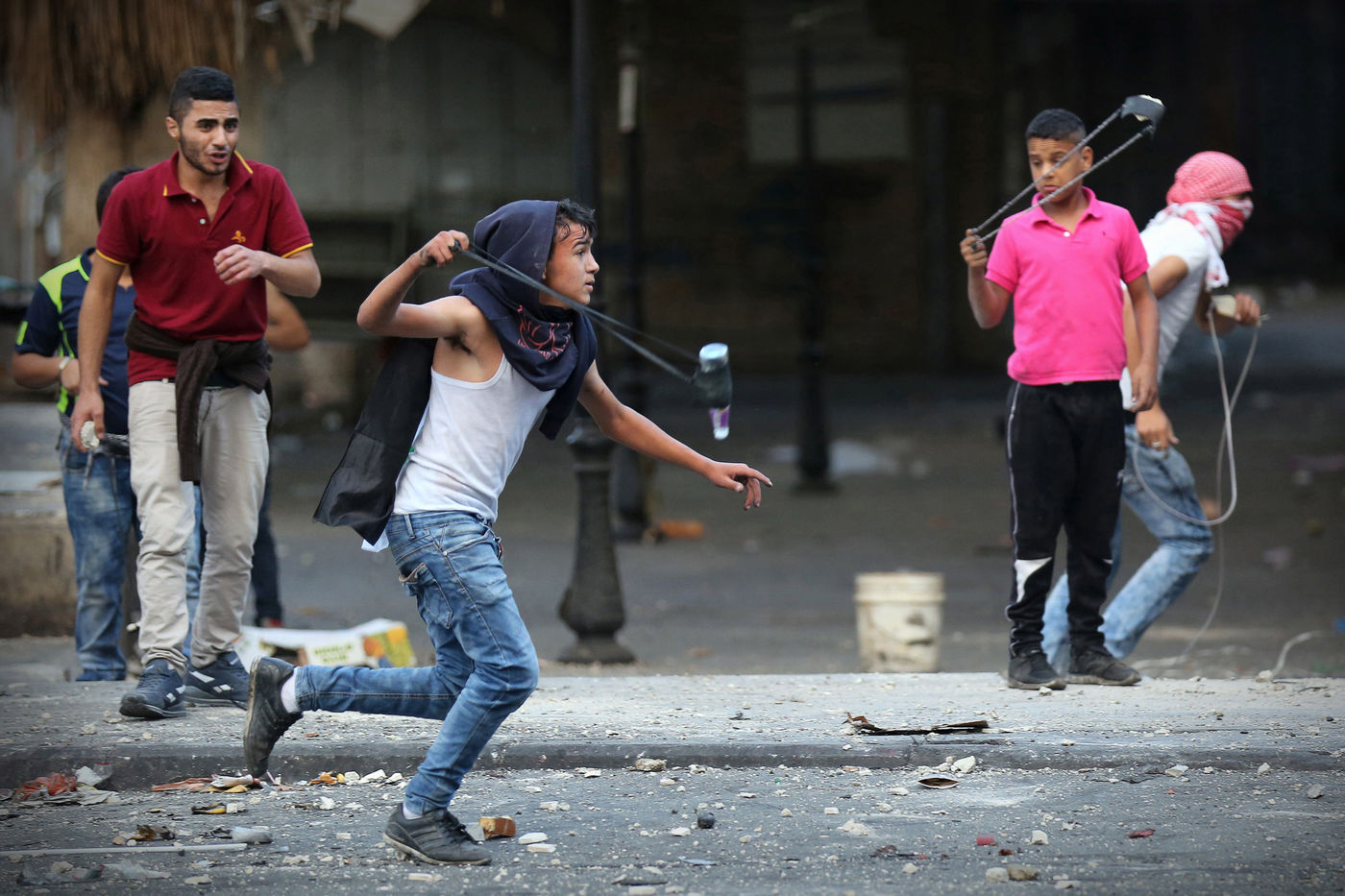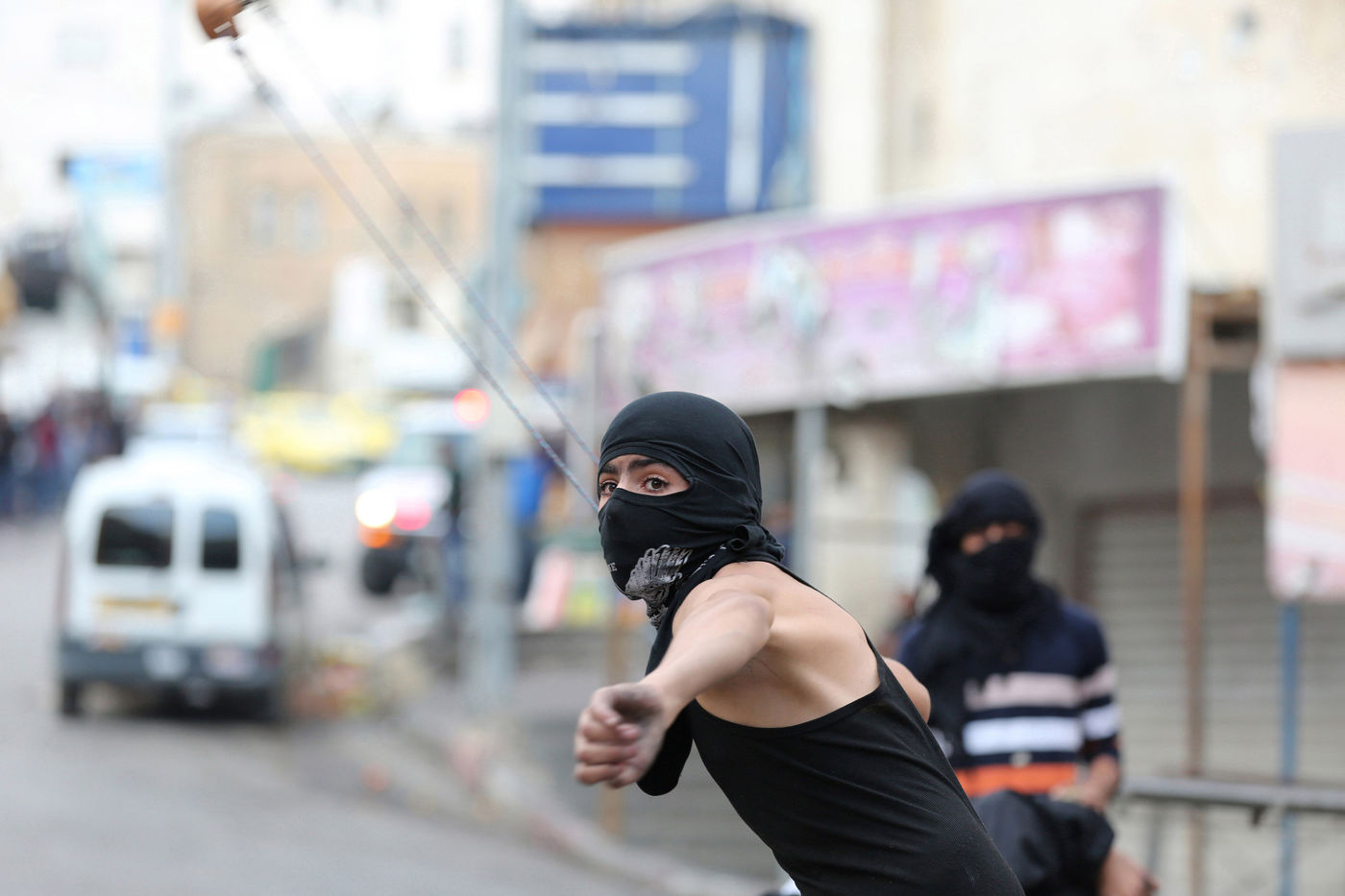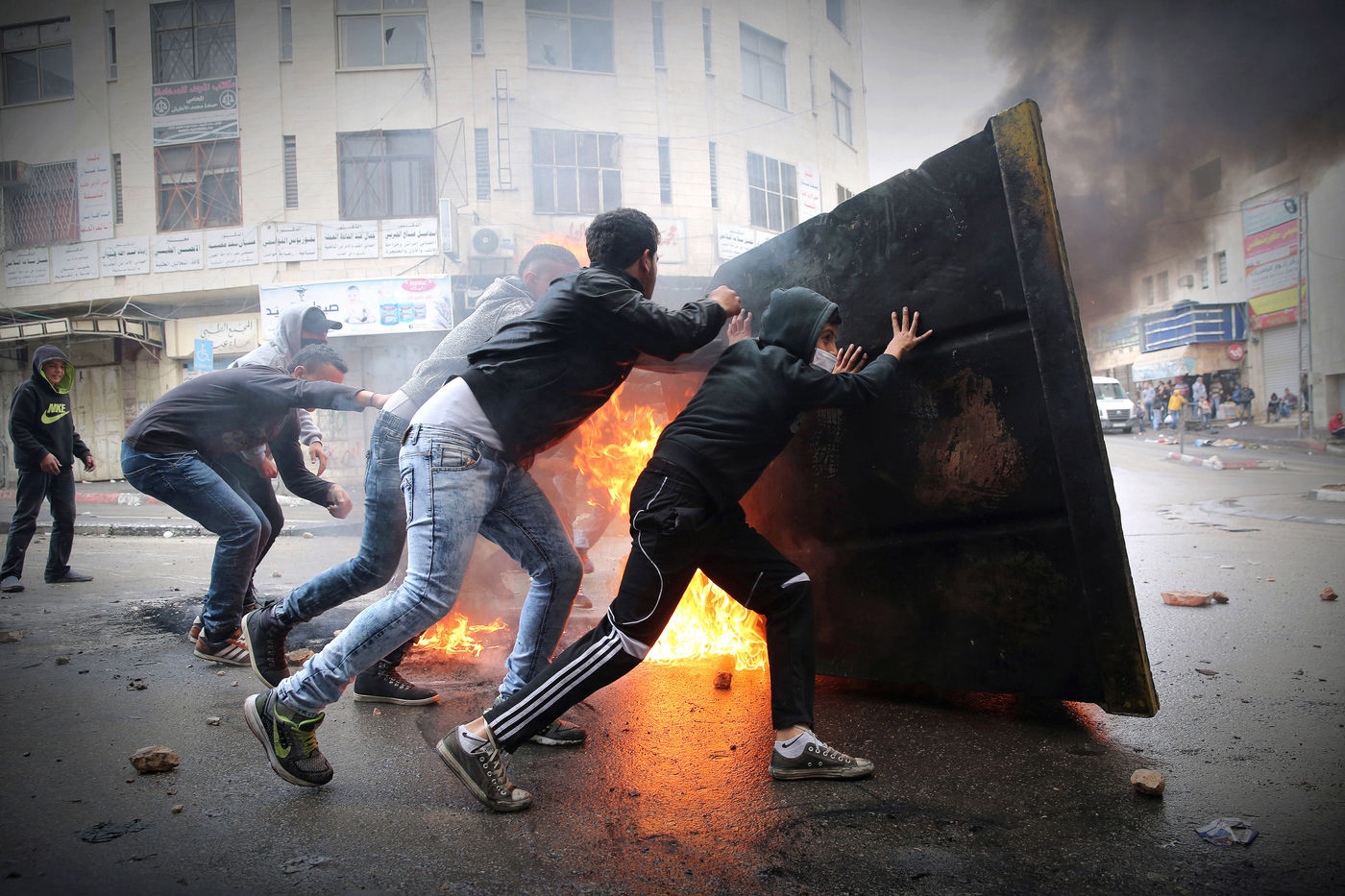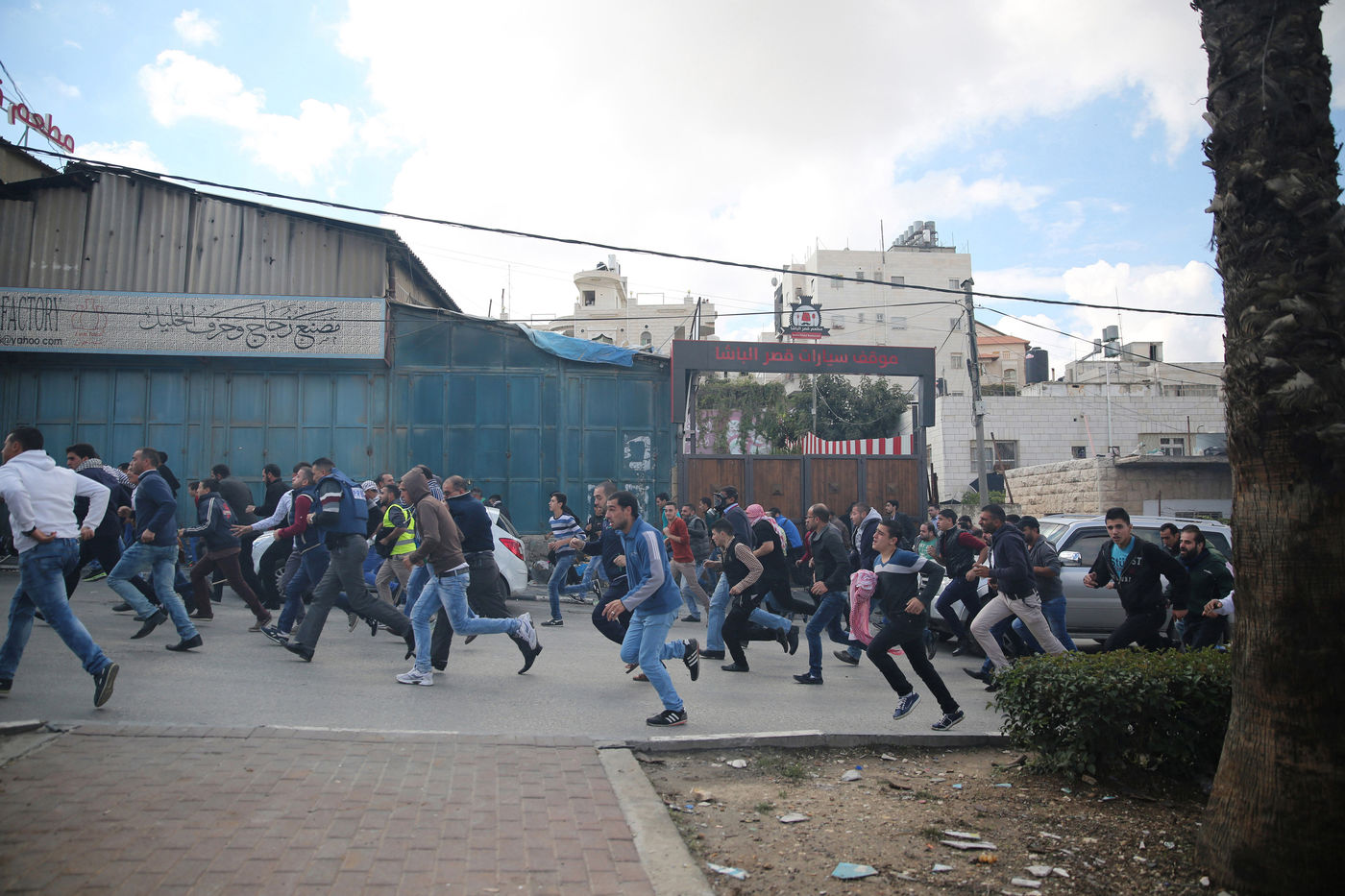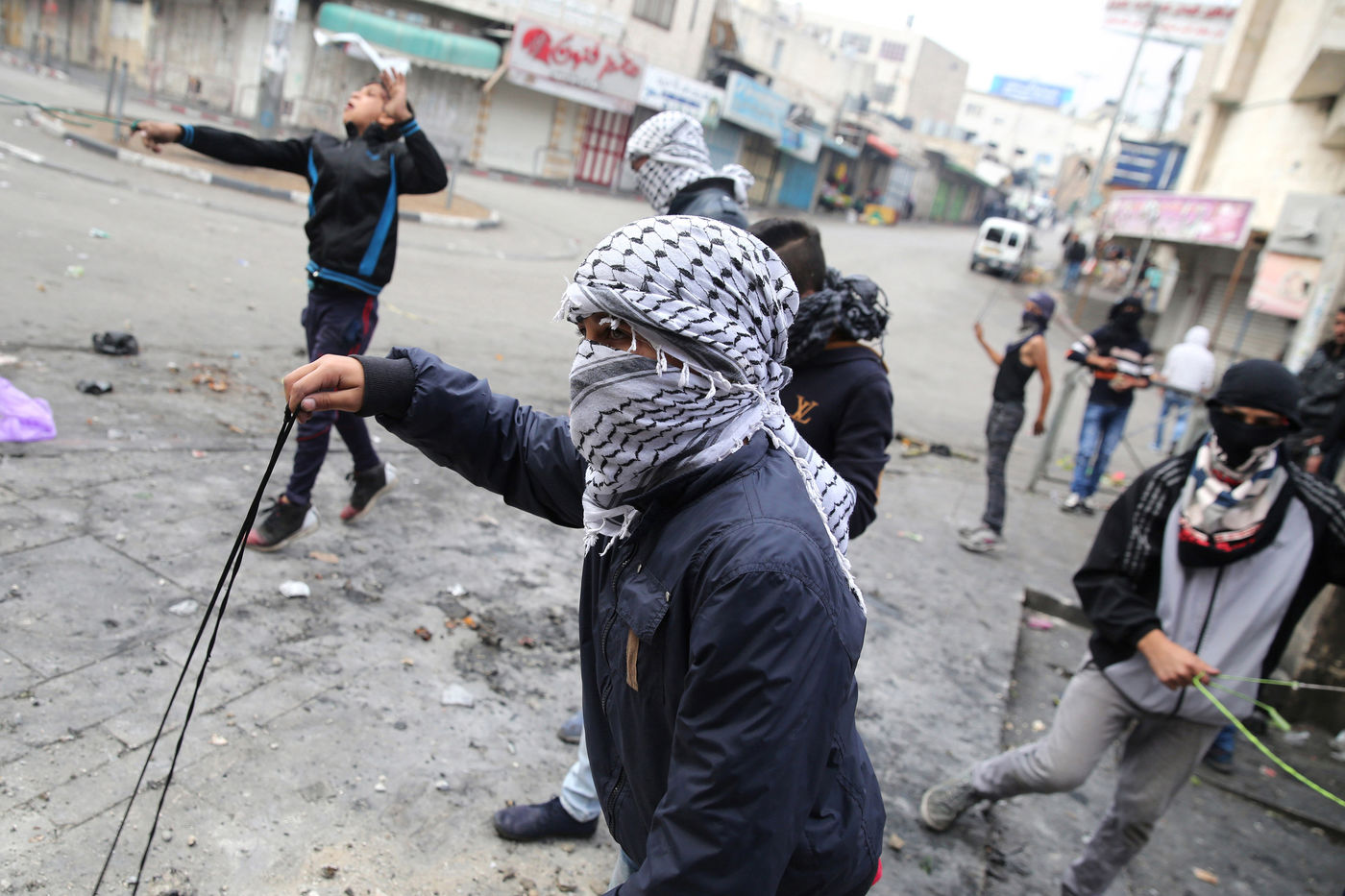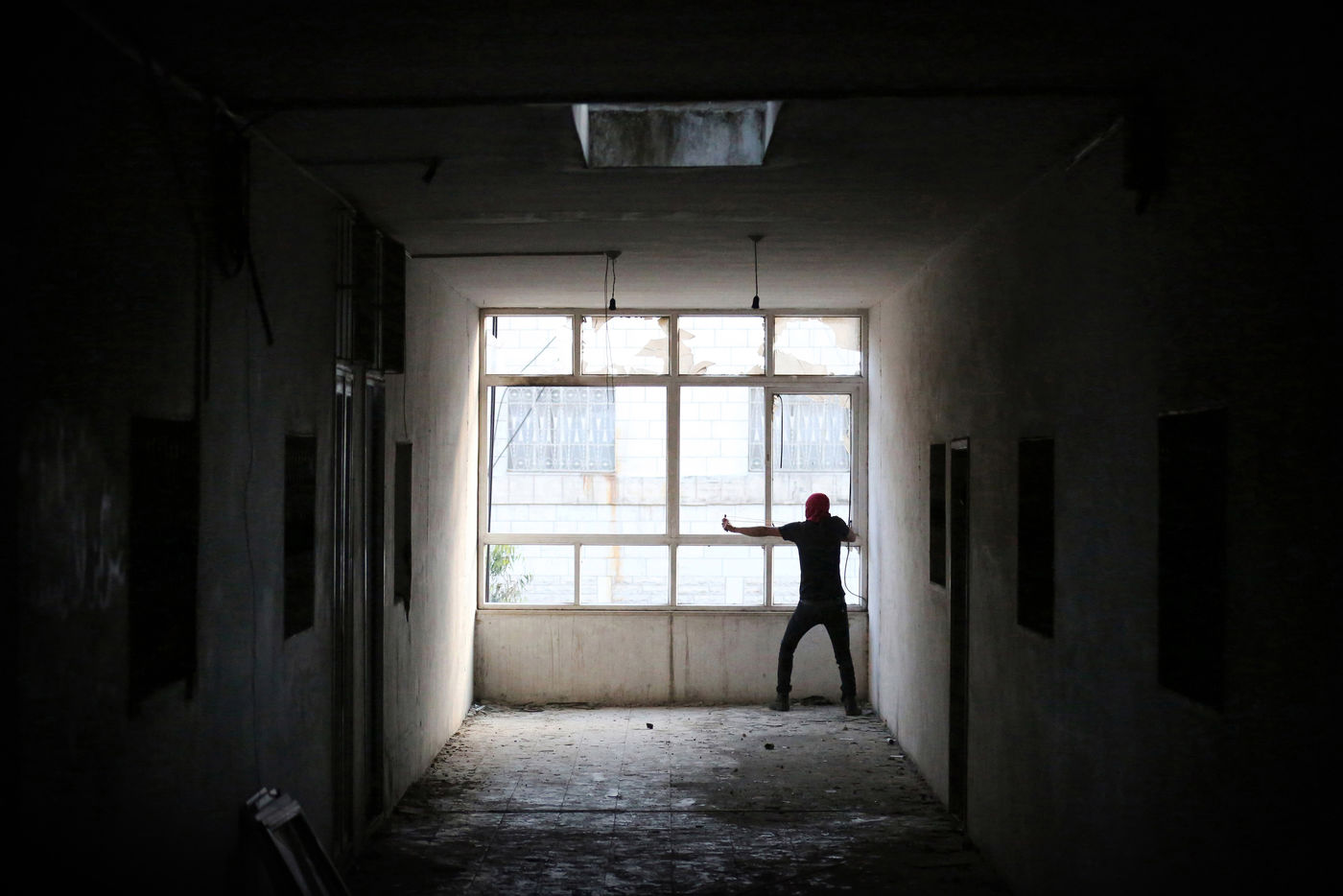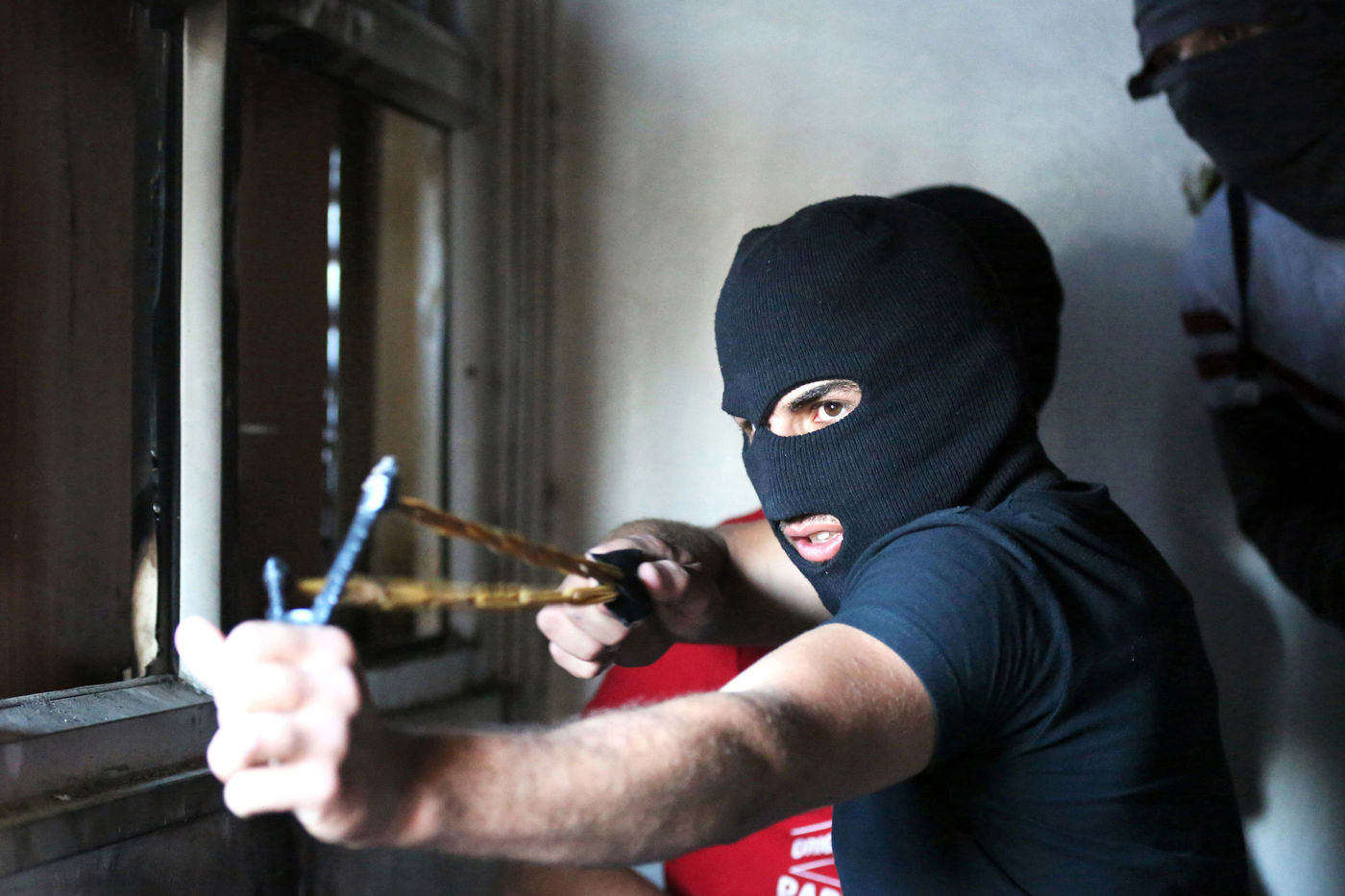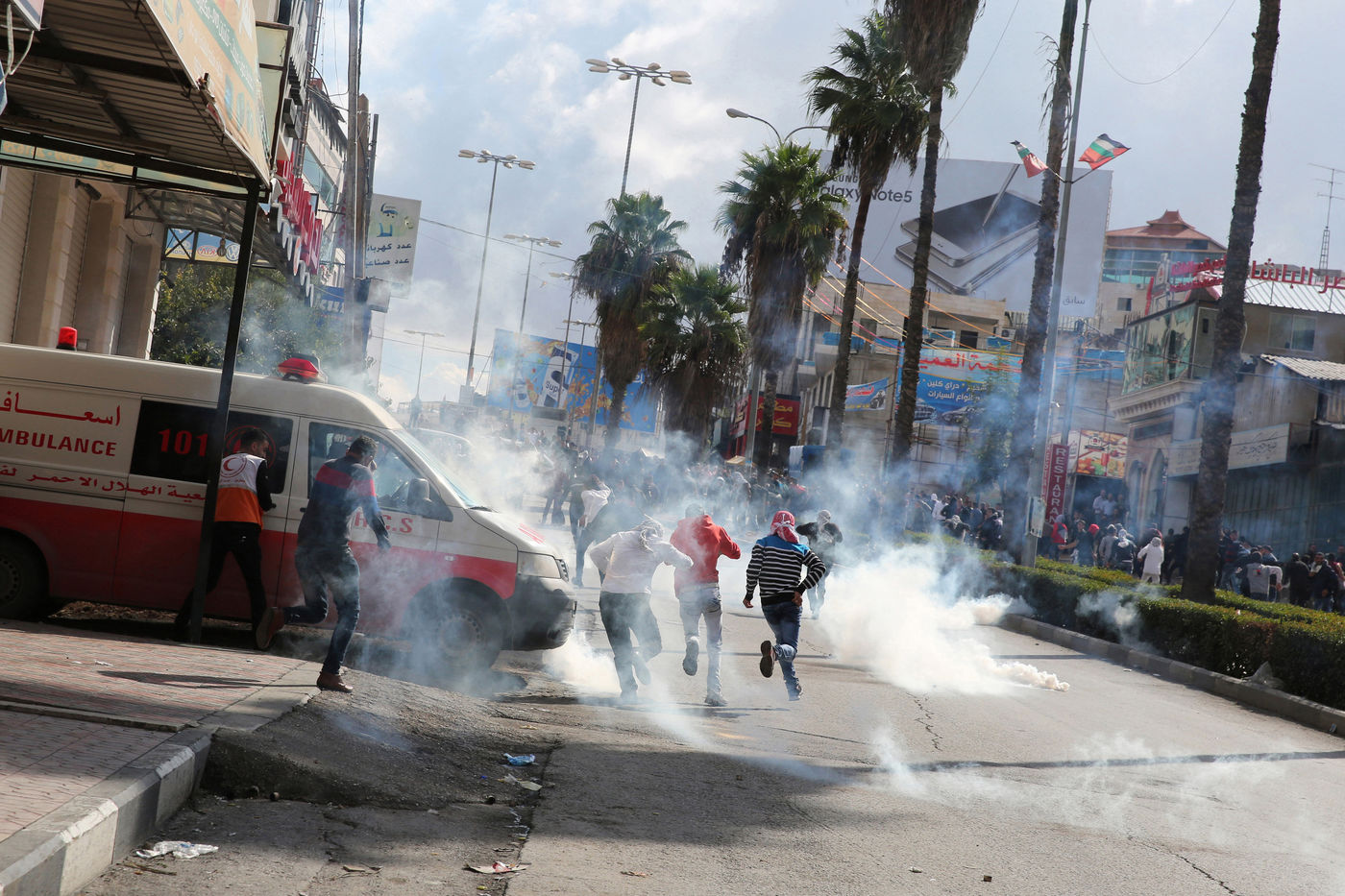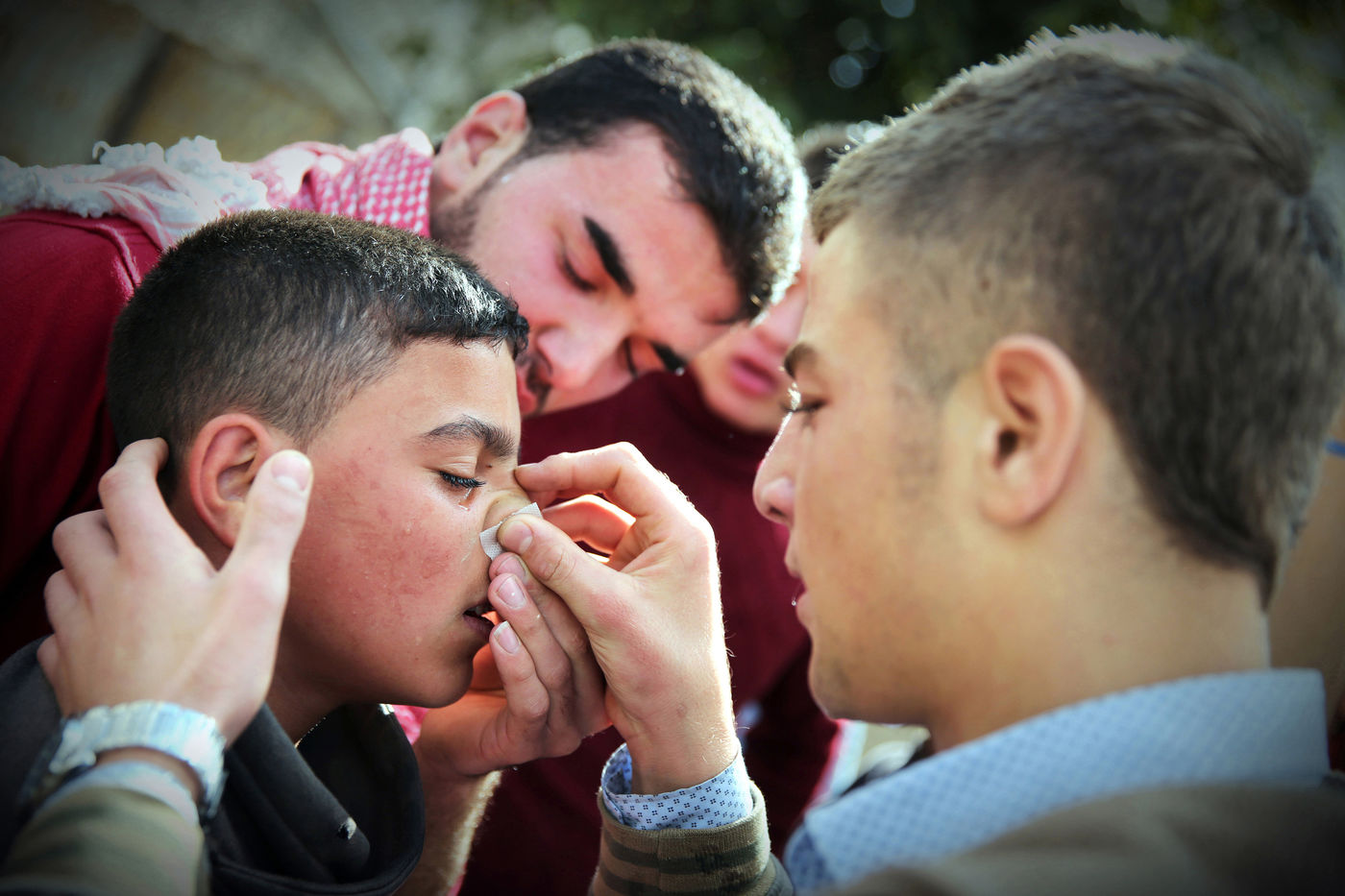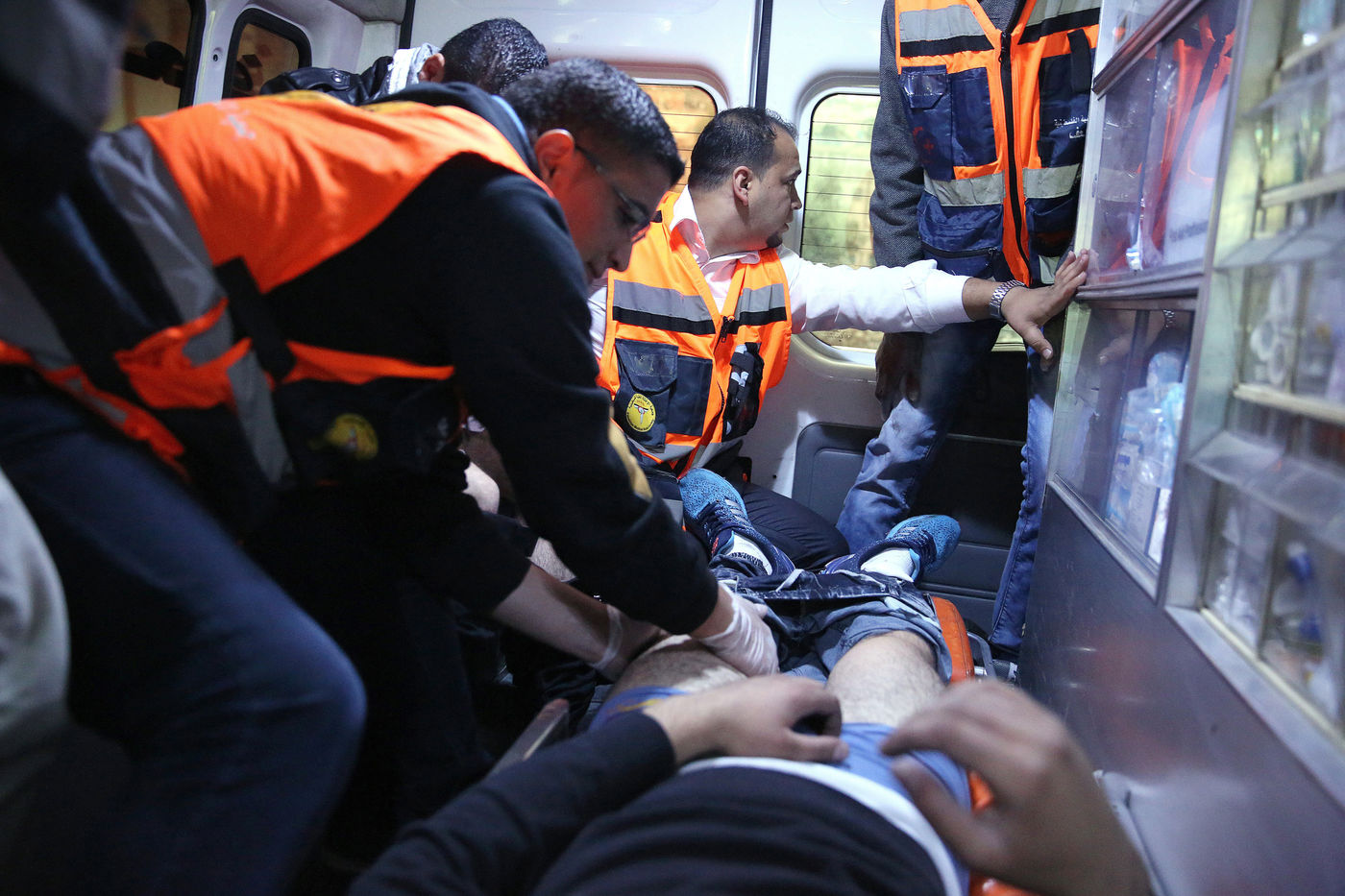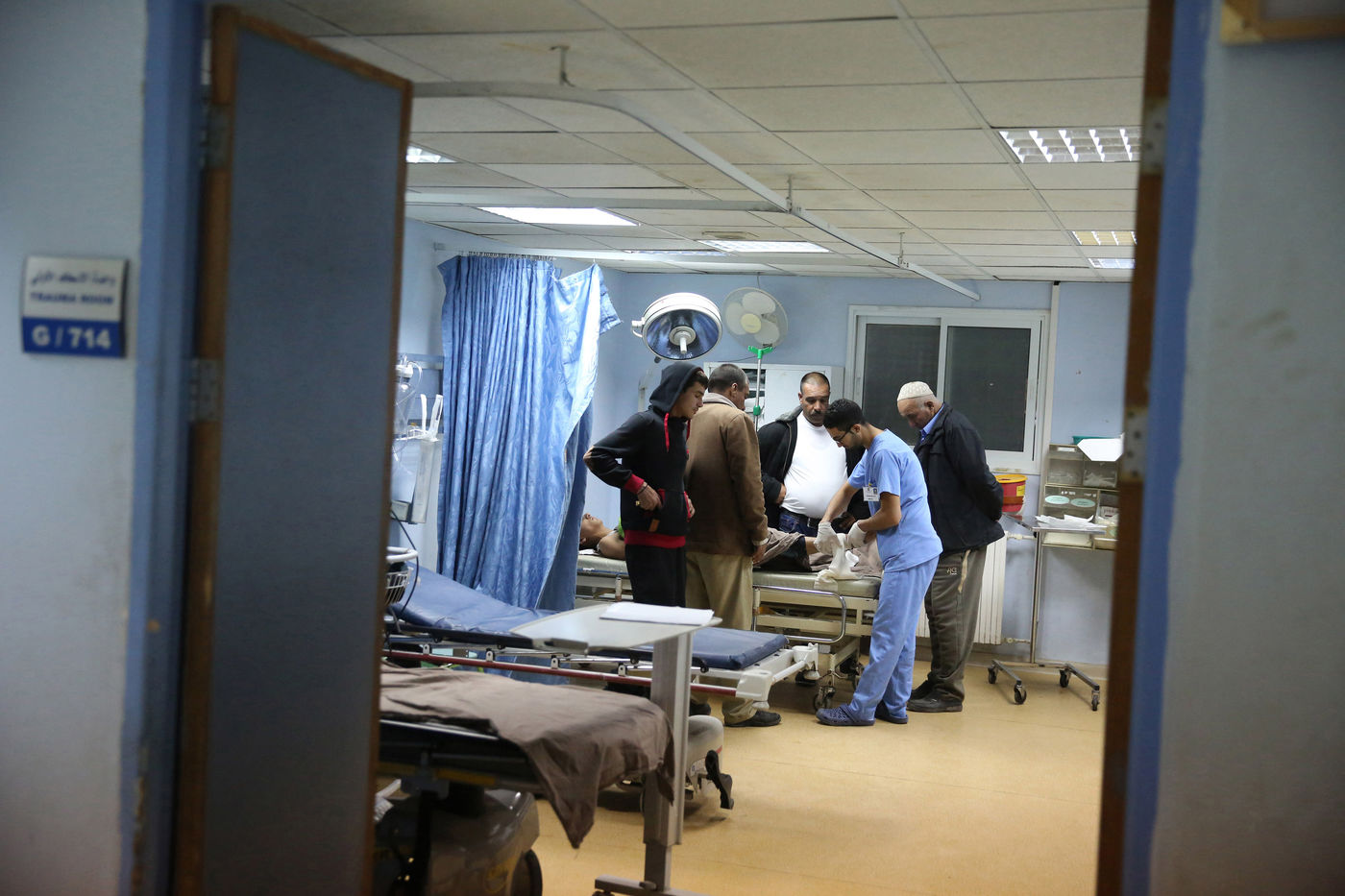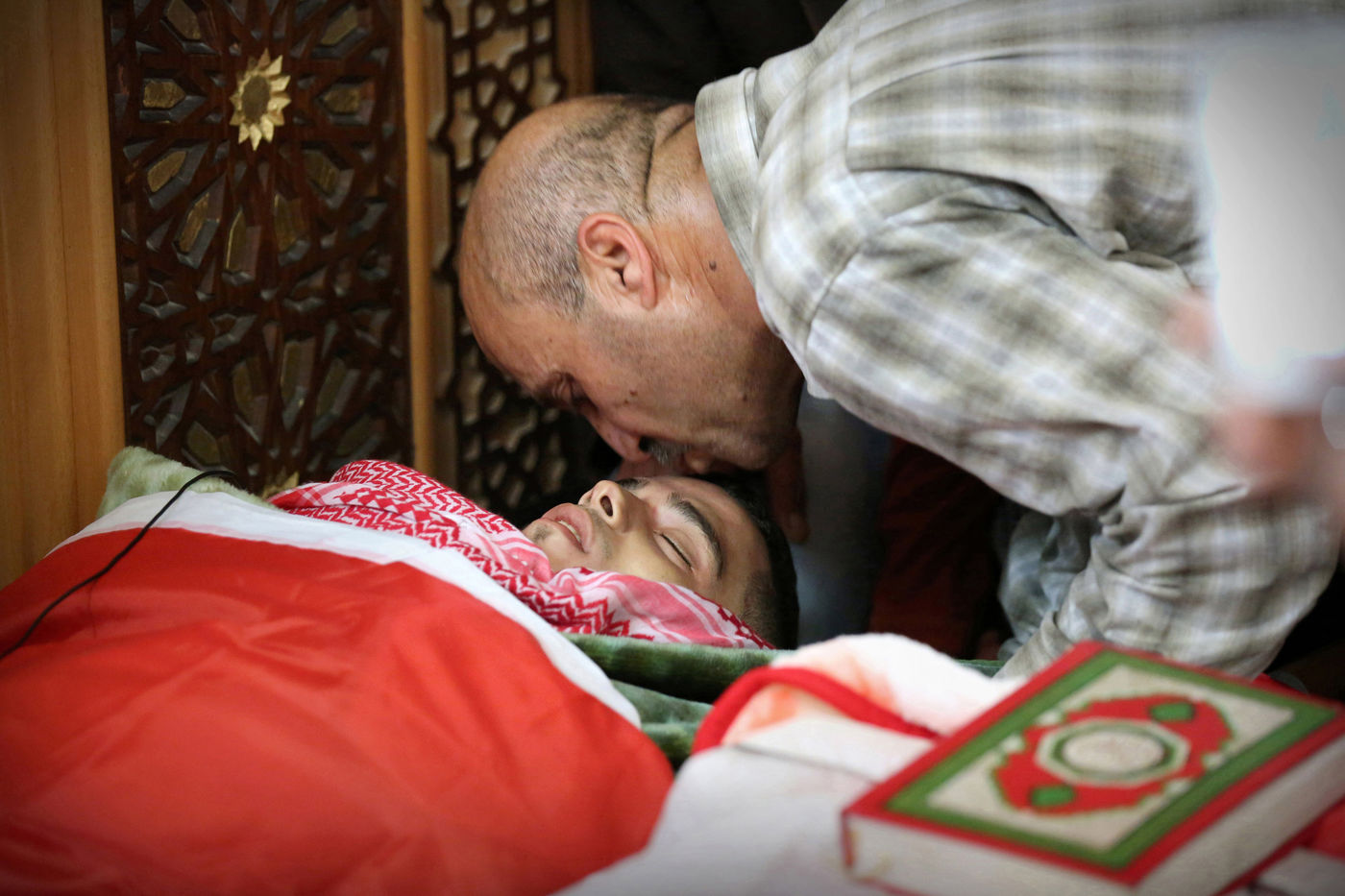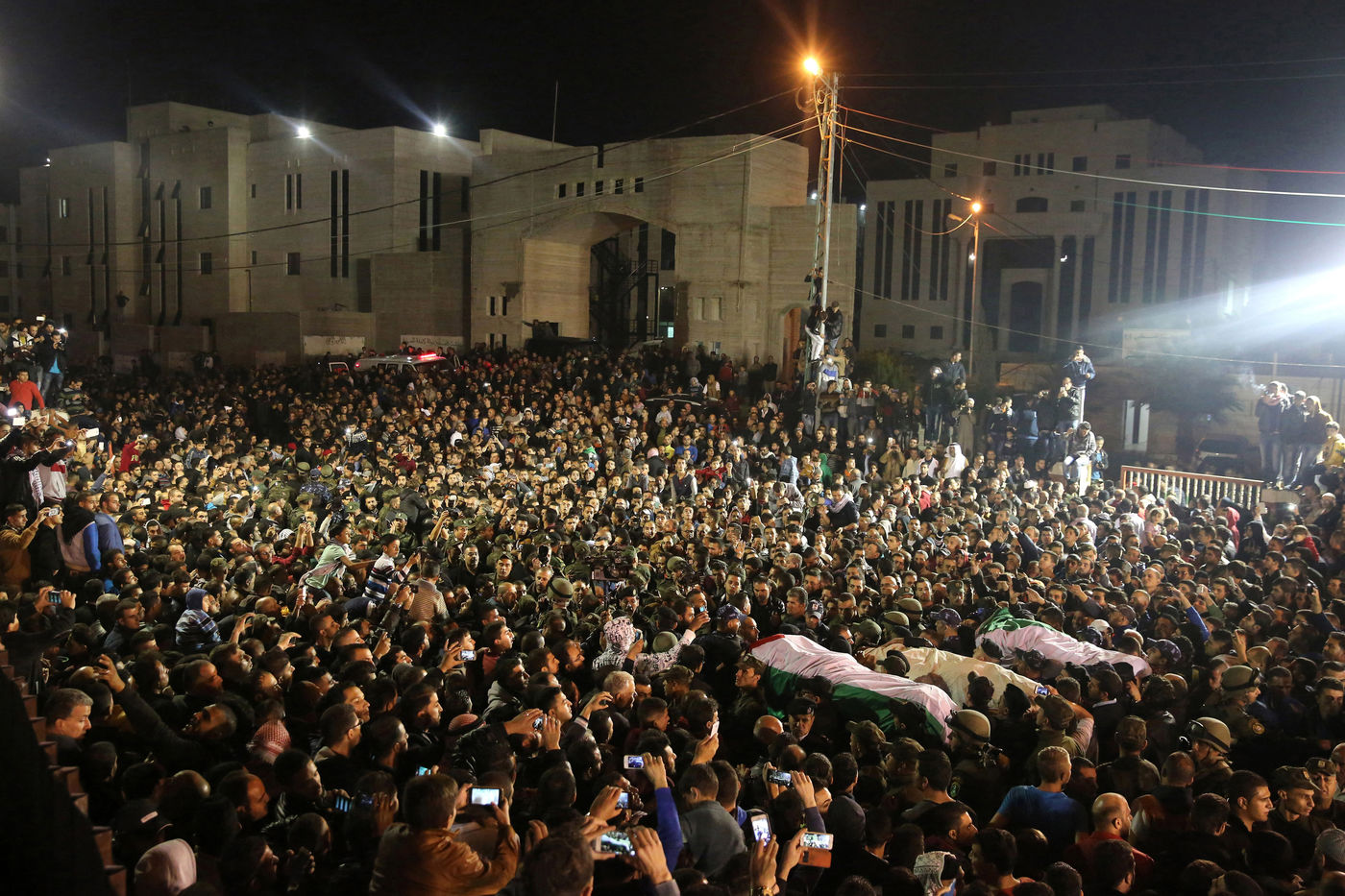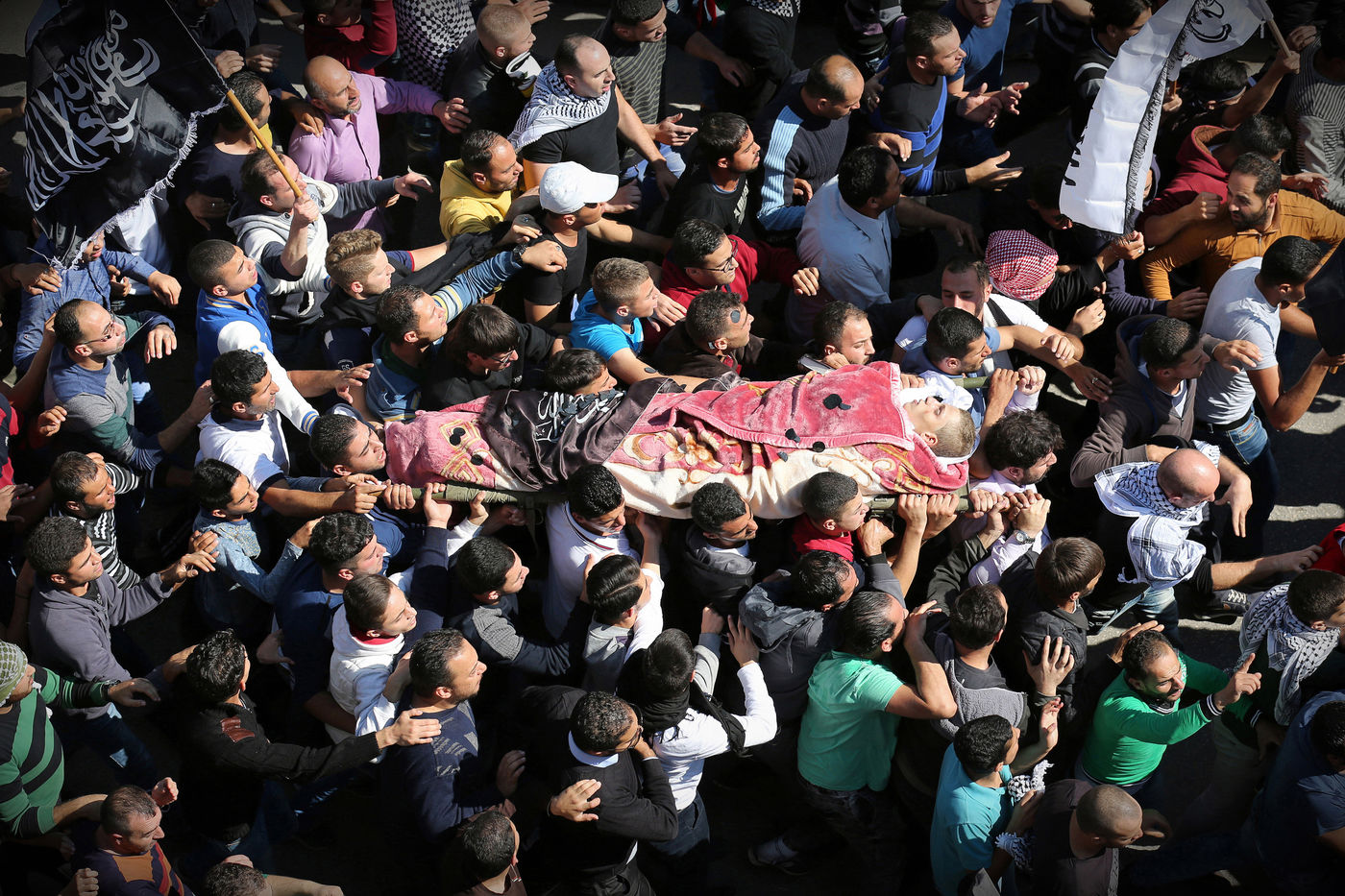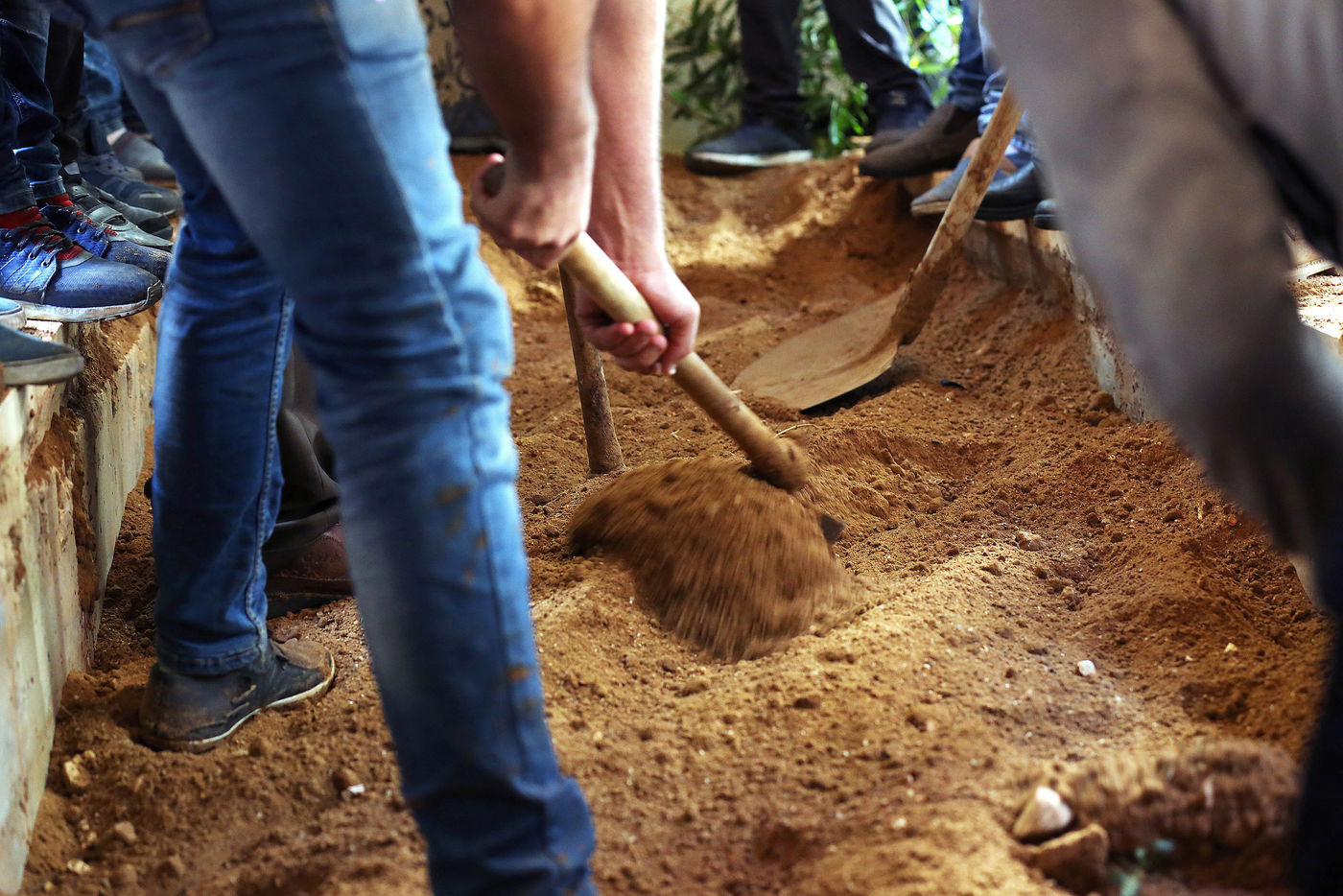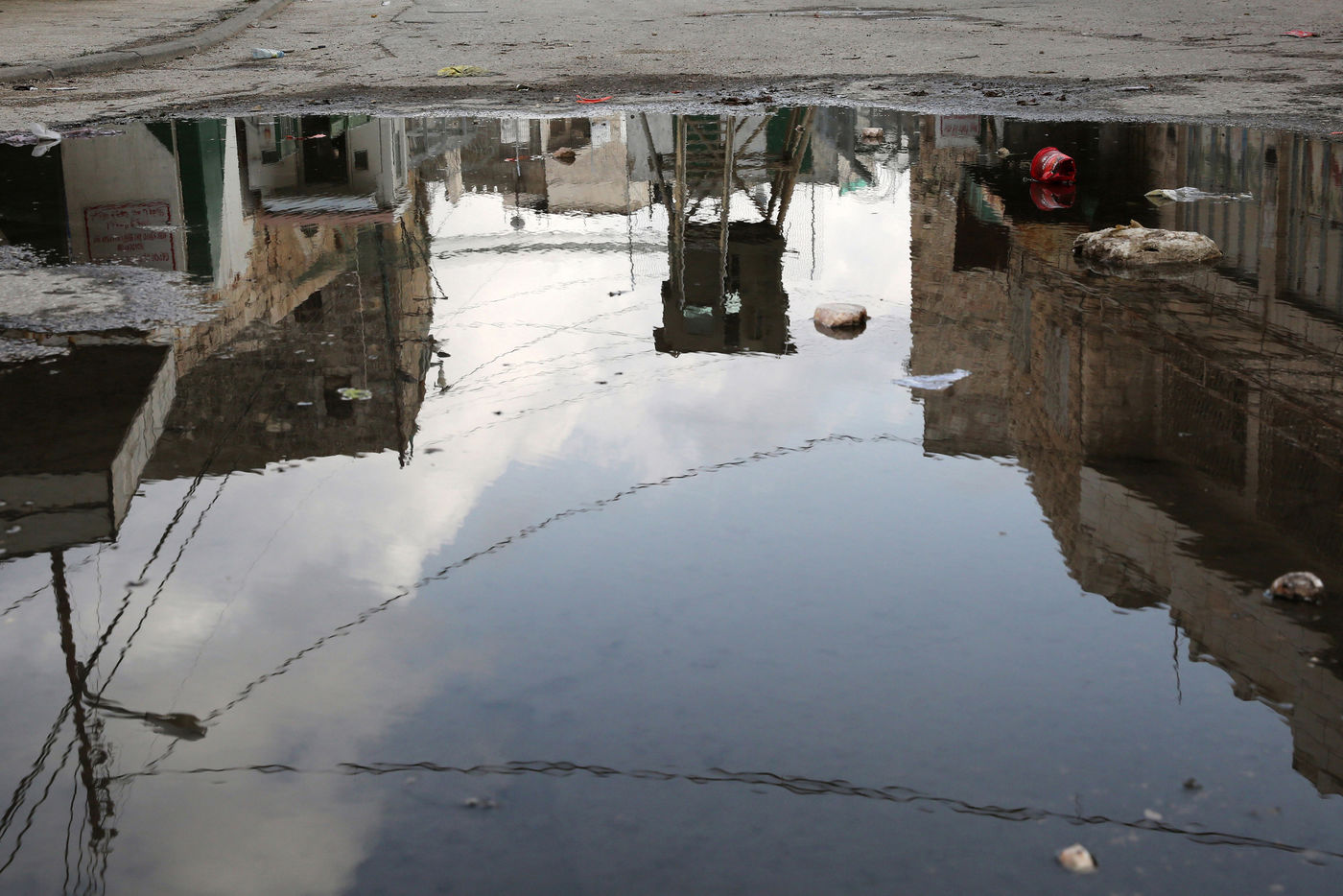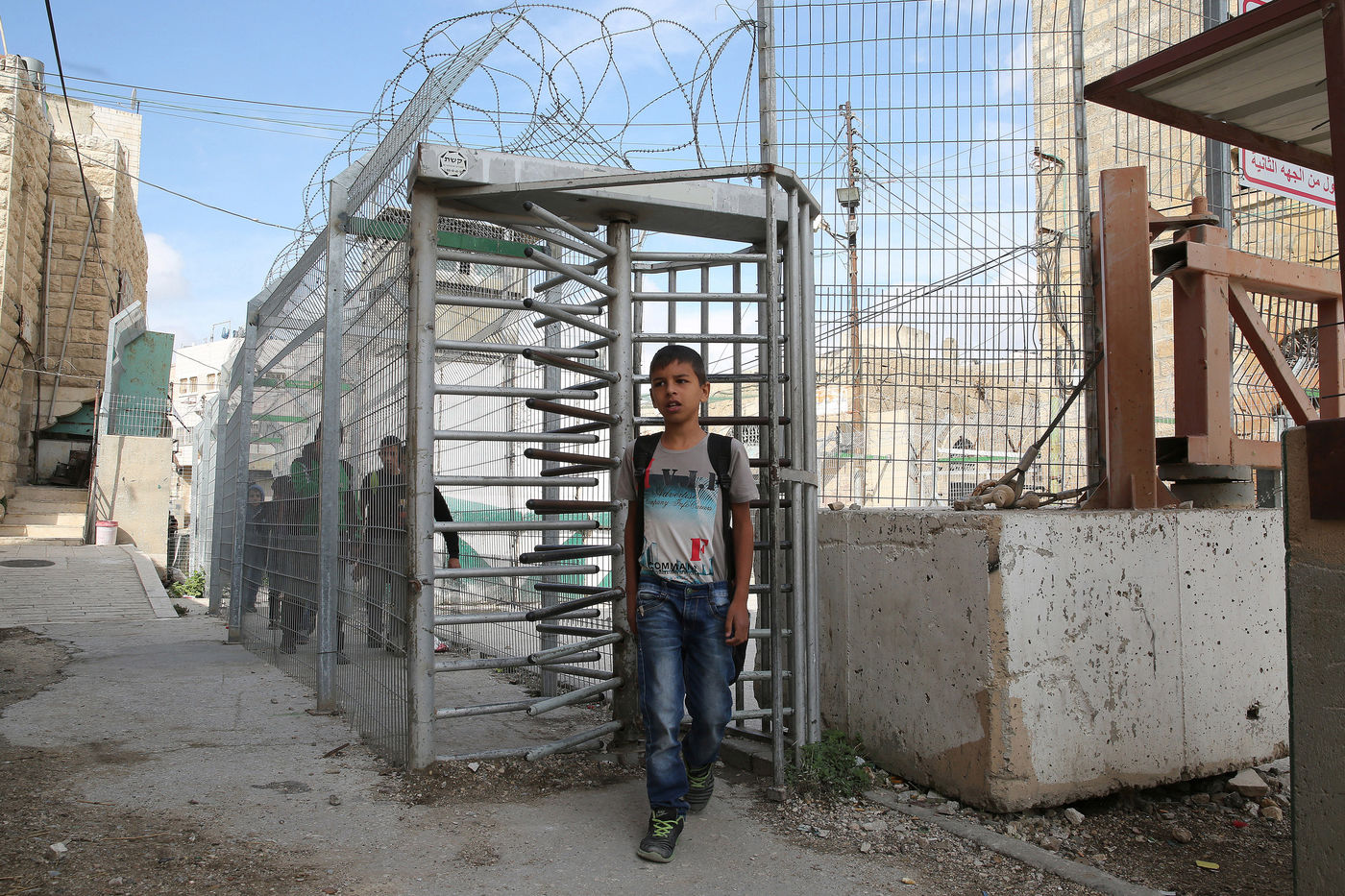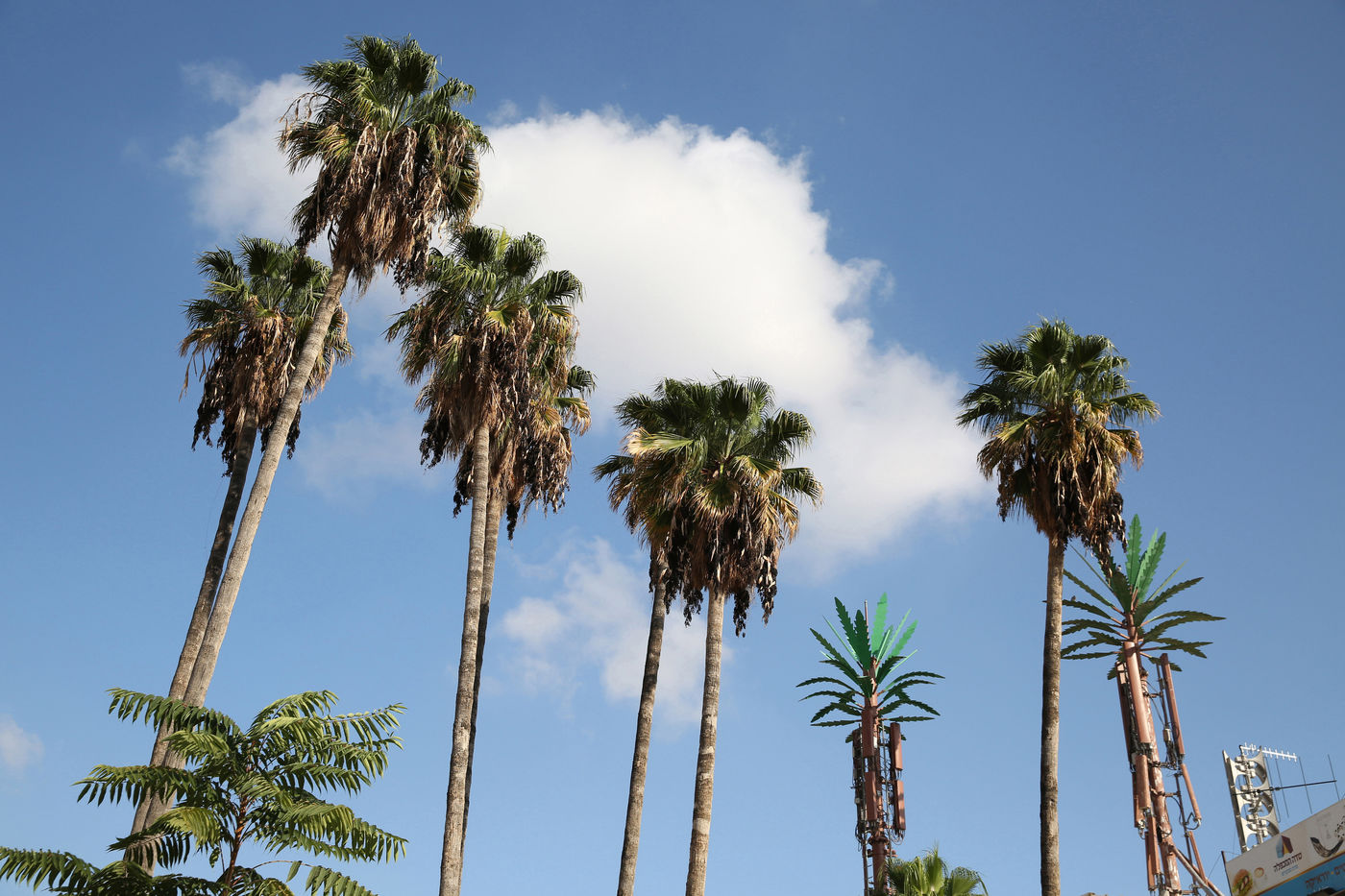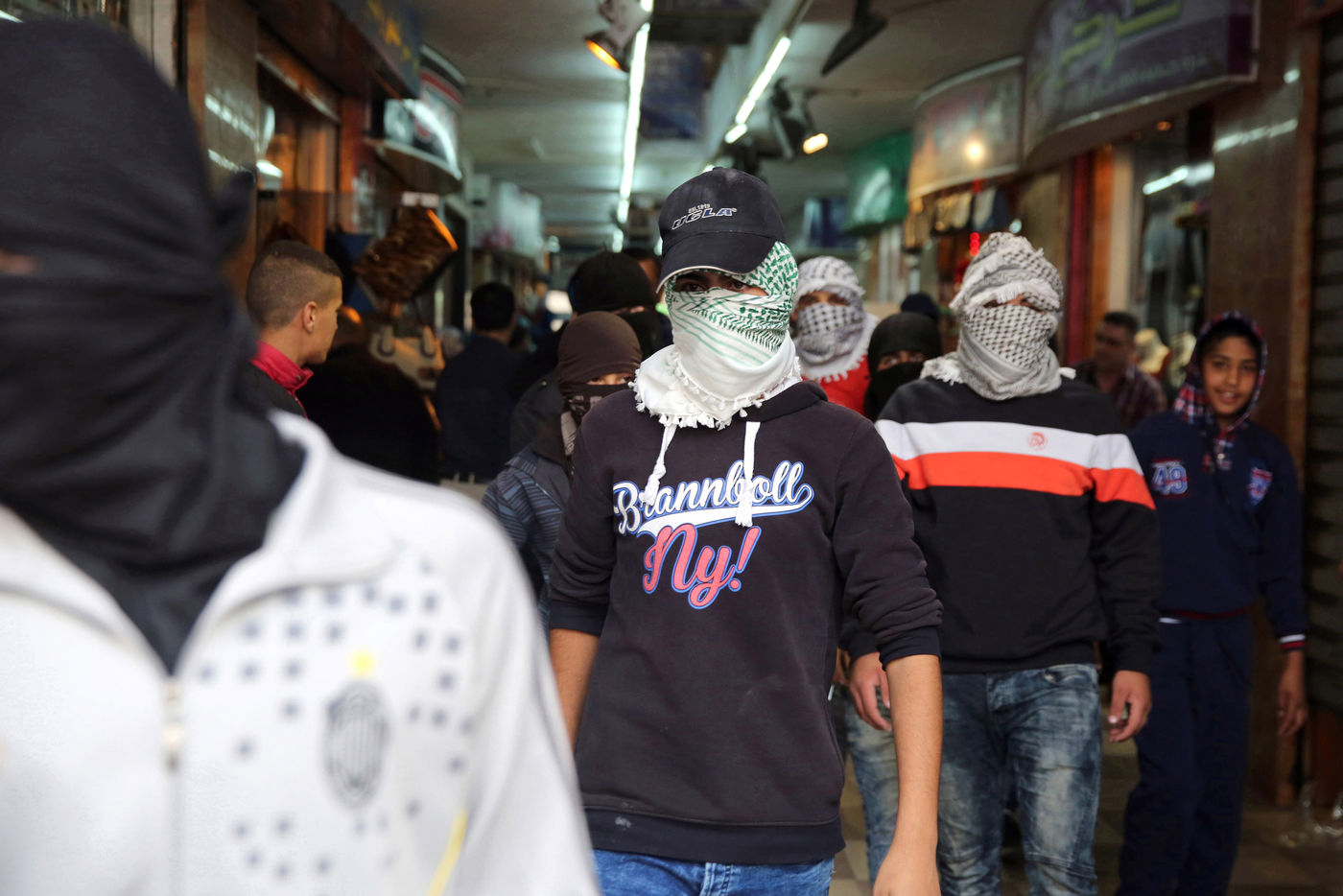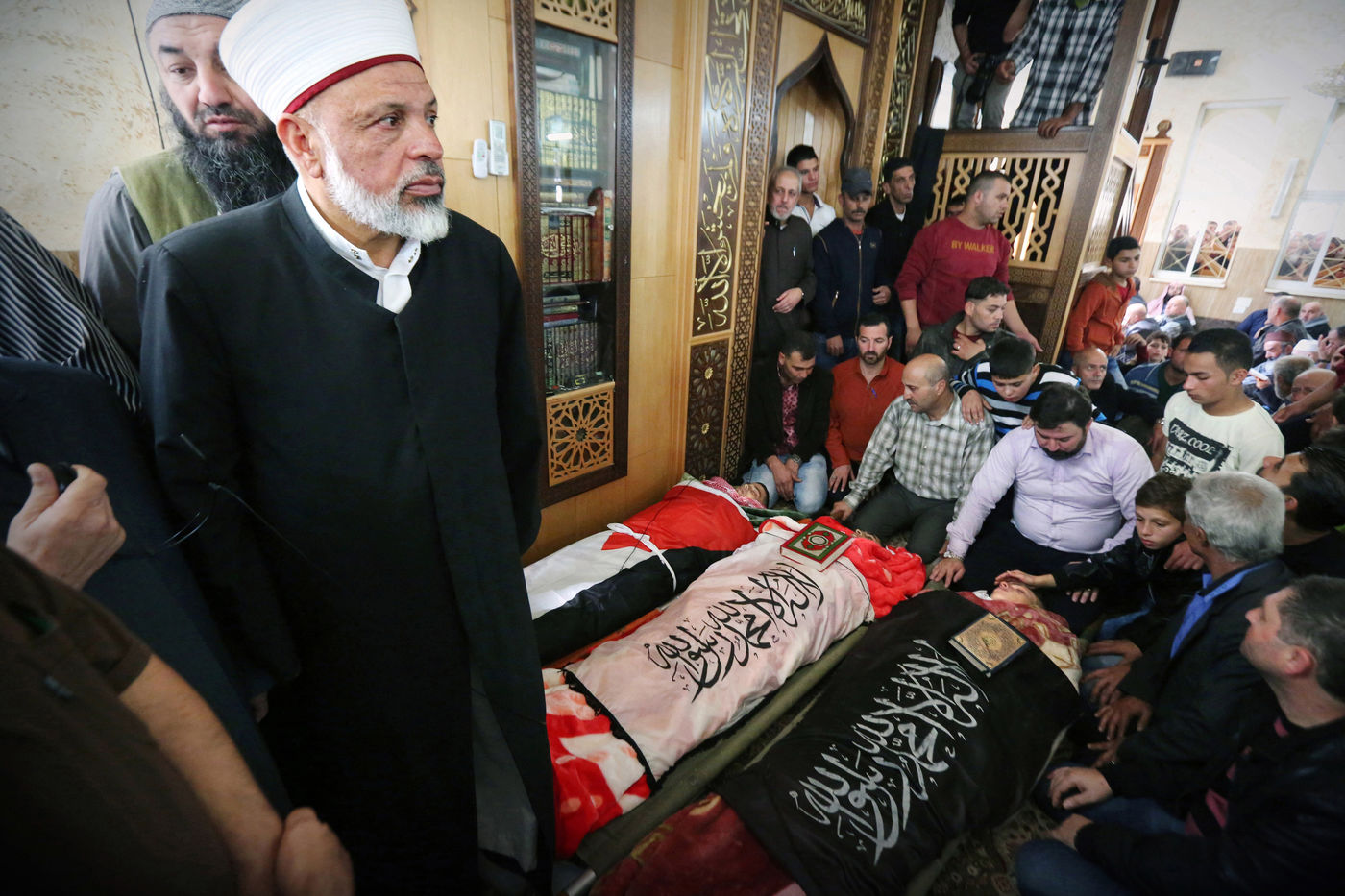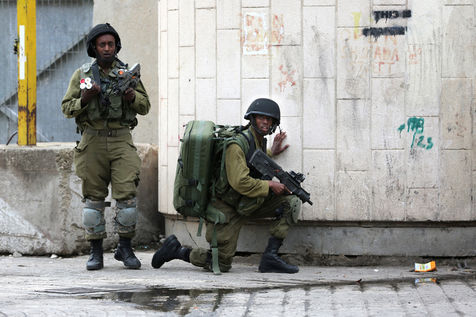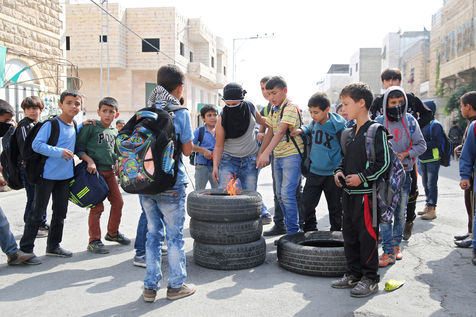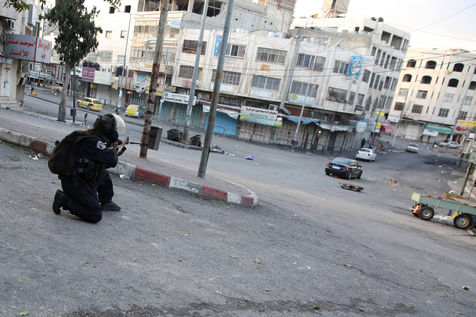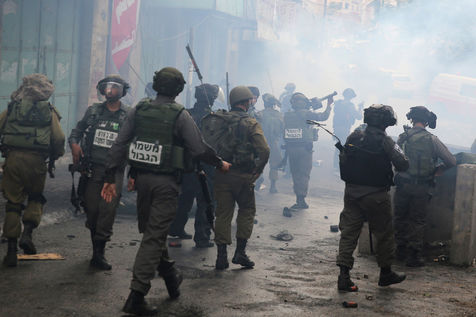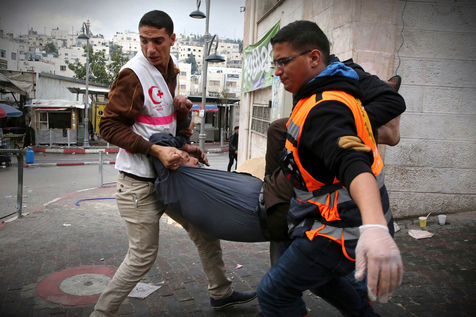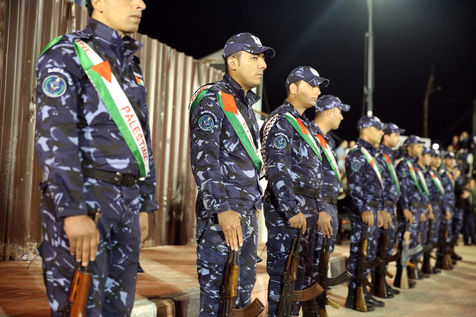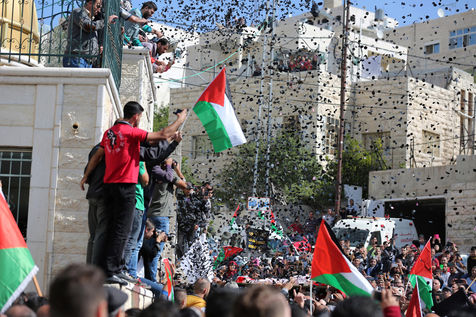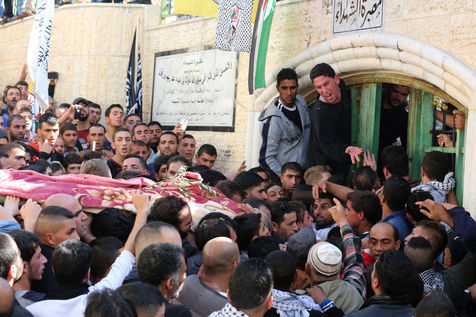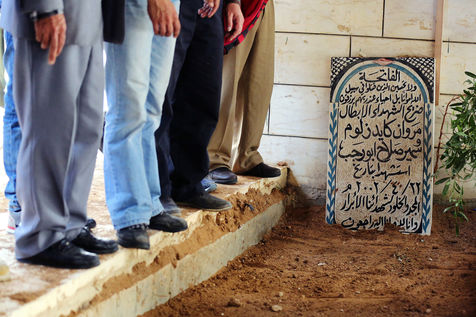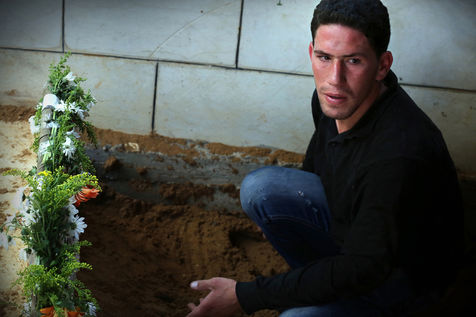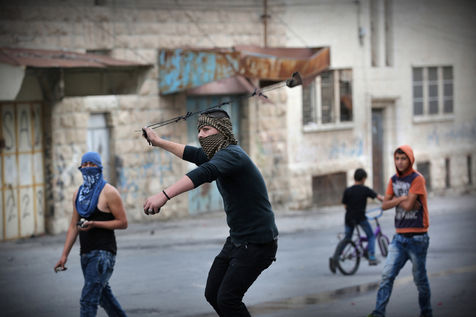Hebron, une jeunesse sous tension
A l automne 2015, une vague de terreur fait eclater une nouvelle fois le conflit Israelo-Palestinien. Les termes d Intifada des couteaux, de 3eme Intifada sont evoques. Derriere les appellations et les mots, les tensions devenues quotidiennes déstabilisent profondément plusieurs régions d Israel et de Cisjordanie. En première ligne de cette recrudescence de violence se trouve la ville d Hebron.
Cette ville de 200000 habitants egalement appelee ville de l apartheid, est divisee en deux parties distinctes, quadrillees et controlees par les forces Israeliennes. (ndlr : La ville compte 500 colons juifs, repartie en 5 colonies dans le centre ville, proteges par 2000 militaires en poste. Le reste de la population est musulmane) Les nombreux check-points rendent impossible l acces aux palestiniens a certains quartiers. Le climat hyper-securitaire ambiant et les oppressions constantes ont debouche sur une situation a l exaspération palpable.
Plus que de simples actes terroristes isolés, l embrasement des tensions est une maniere pour des milliers de Palestiniens de repondre aux contraintes quotidiennes insupportables.
Qu ils soient proches du Hamas, du Fatah ou simple citoyen, le sentiment de colere est partage par l ensemble de la population. Les manifestations rassemblent a chaque fois des dizaines de milliers de personnes. Une partie d entre eux decharge leur colère par la violence. Les check-points sont attaques quotidiennement, certaines zones du centre ville transformees en champs de bataille.
Chose étonnante, ce sont les plus jeunes qui sont en premiere ligne du front, a jeter billes et pierres sur les forces d occupations, armees de fusils et de lance grenades.
Ils ont pour la plupart entre 7 et 18 ans, le visage cache derrière un kefie ou un turban. Ils n ont pas peur, ils ont grandit dans ce climat d affrontement. Tous connaissent un ami ou un frere qui a été blesse. Pas une journee ou presque ne se deroule sans qu il n y ait de morts cote Palestinien. Et pourtant, une partie de cette jeunesse cassée retourne inlassablement se defendre et combattre, attaquant sans relâche les militaires postes dans les rues en face.
Qu elle le veuille ou non, cette generation n entretient plus l espoir, plus d alternatives a une résolution pacifique...
...alors elle continue a se battre.
Hebron, a youth under pressure
In autumn 2015, a wave of terror sparks once again the Isreali-Palestinian conflict. The names Knife Intifada and Third Intifada are mentioned. Behind words and appellations, daily tensions deeply destabilize several regions of Israel and the West Bank. On the frontline of this violence outbreak lies the city of Hebron.
This city of 200,000 also called the « city of apartheid » is divided in two distinct parts, locked down and controlled by Israeli forces (Author?s note: there are 500 settlers in the city, divided up in 5 settlements in the city center, protected by 2,000 soldiers on duty. The rest of the population are more than 99% Muslims). Numerous check-points prevent Palestinians from accessing some neighborhoods. The heavily securitarian ambient climate and the constant oppressions have lead to a situation of tangible exasperation.
More than mere isolated « acts of terror » , the blazing up of tensions is a way for thousands of Palestinians to respond to daily unbearable restrictions.
Whether they are close to Hamas or Fatah, or « simple citizens », the feeling of anger is shared by the whole population. Demonstrations gather tens of thousands of people every time. A part of them unload their anger with violence, Check-points are attacked daily, some areas of the center turned into battlefields.
Astonishing thing, it is the youngest who are on the frontline, throwing marbles and stones at occupation forces, who are armed with rifles and grenade launchers.
Most of them are between 7 and 18 years old, their face hidden behind a keffiyeh. They are not afraid, they have grown in this climate of confrontation. They all know a friend or a brother who has been injured. Since their earliest childhood, a part of these youths are immersed in a tension that has become an integral part of themselves, of their personality, of their lifestyle and their way to grasp everyday life. There is almost never a day without deaths on the Palestinian side. And yet, part of this « broken » youth tirelessly returns to defend themselves and fight, attacking relentlessly the soldiers positioned in the facing streets. Day after day, the youngest are on the frontline.
Whether they like it or not this generation doesn?t have hope anymore, no alternatives to a pacific solution?
? So they keep on fighting.
